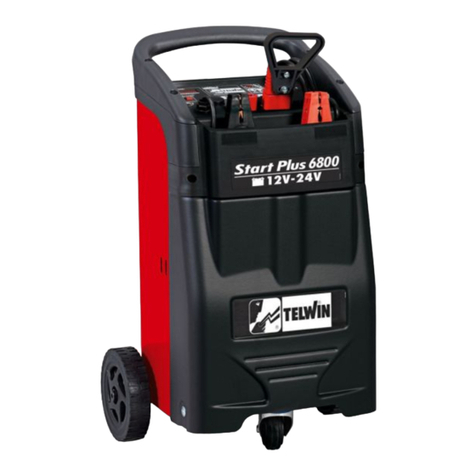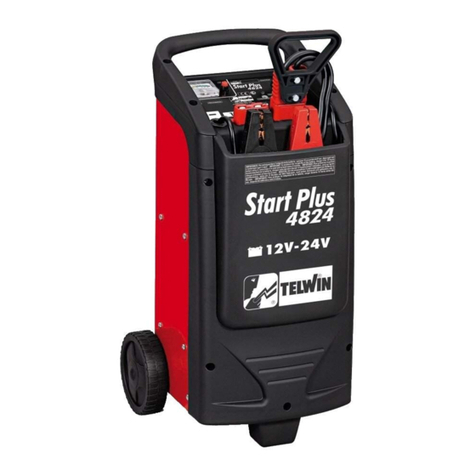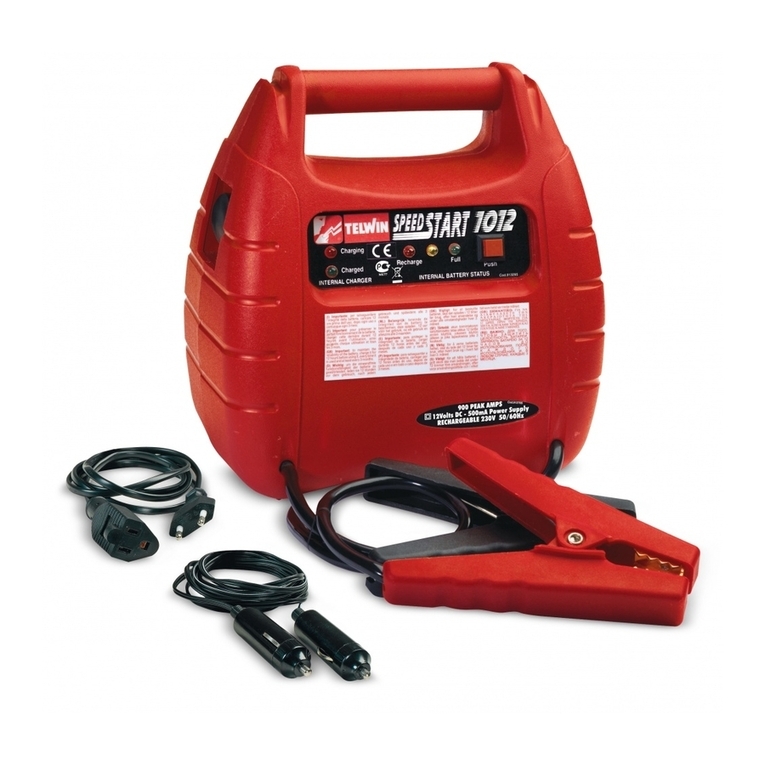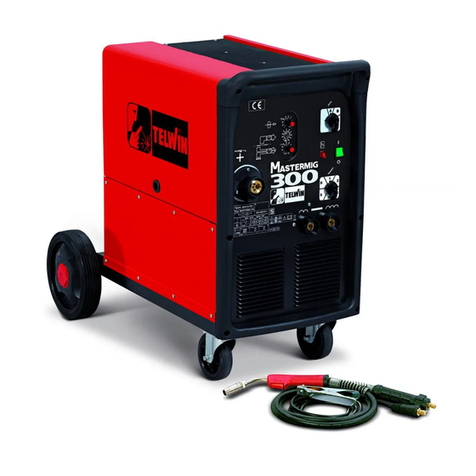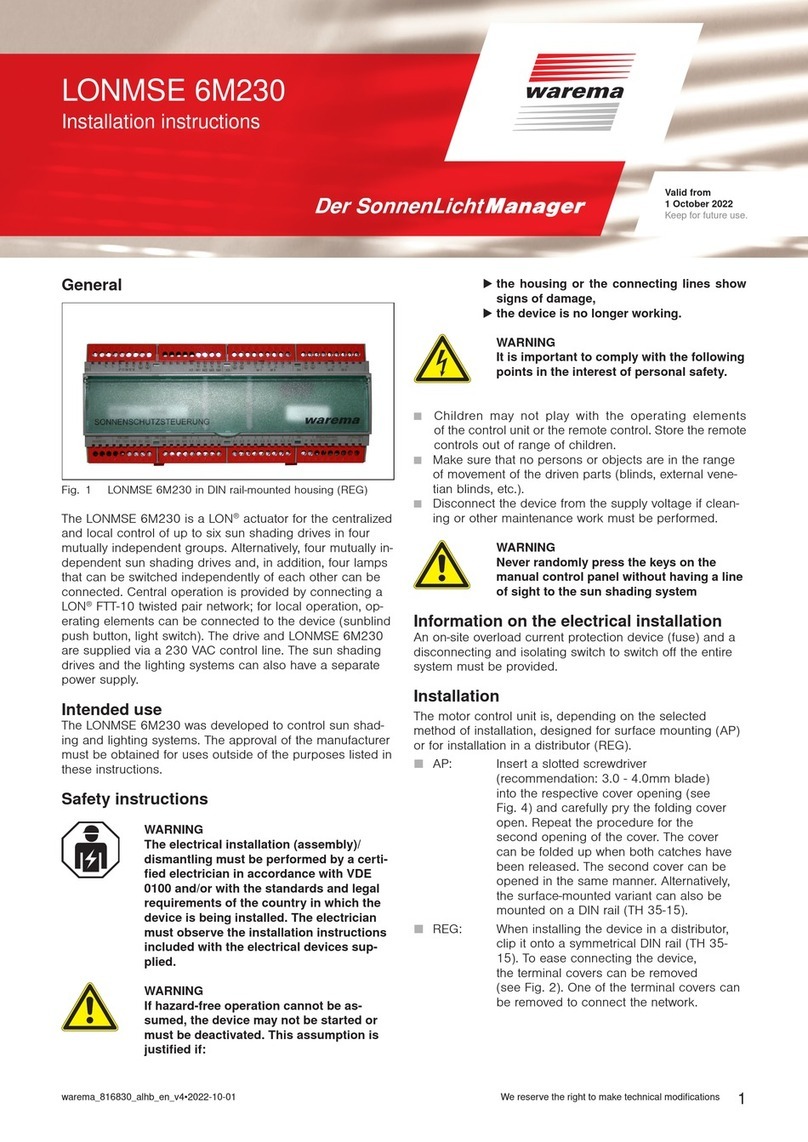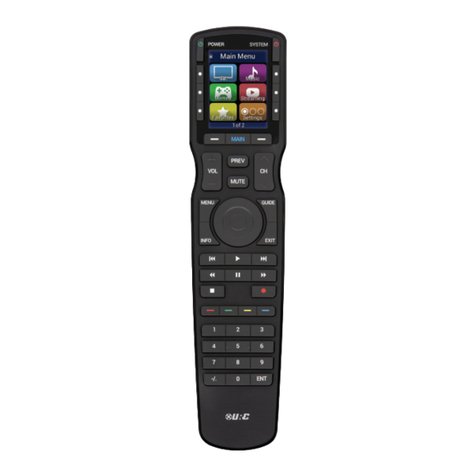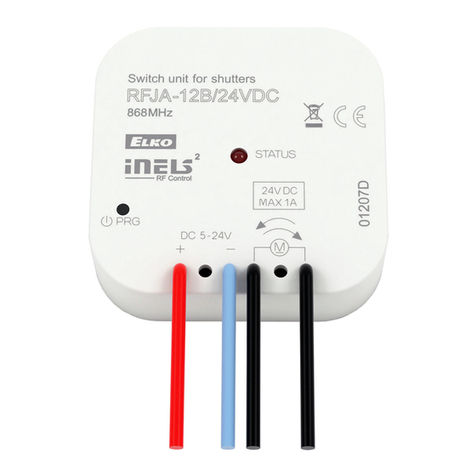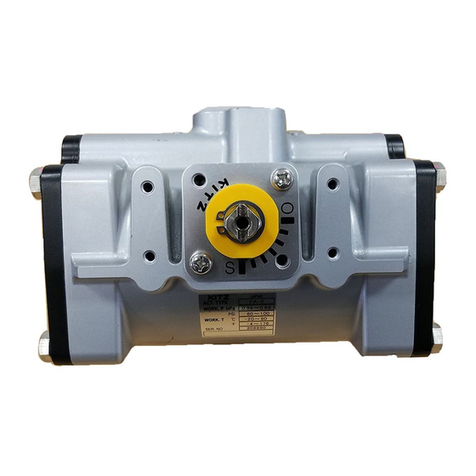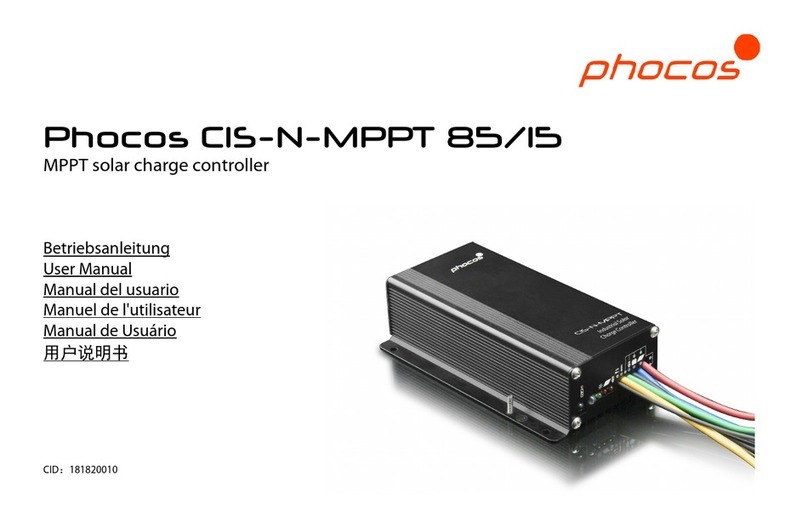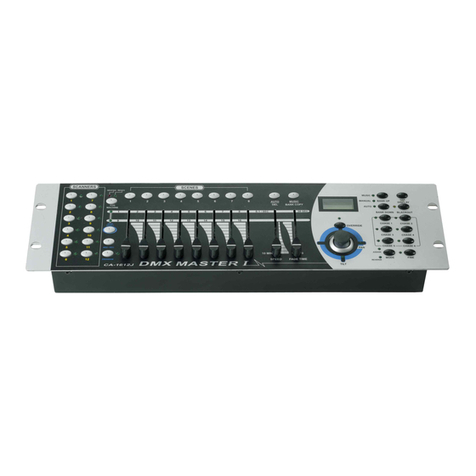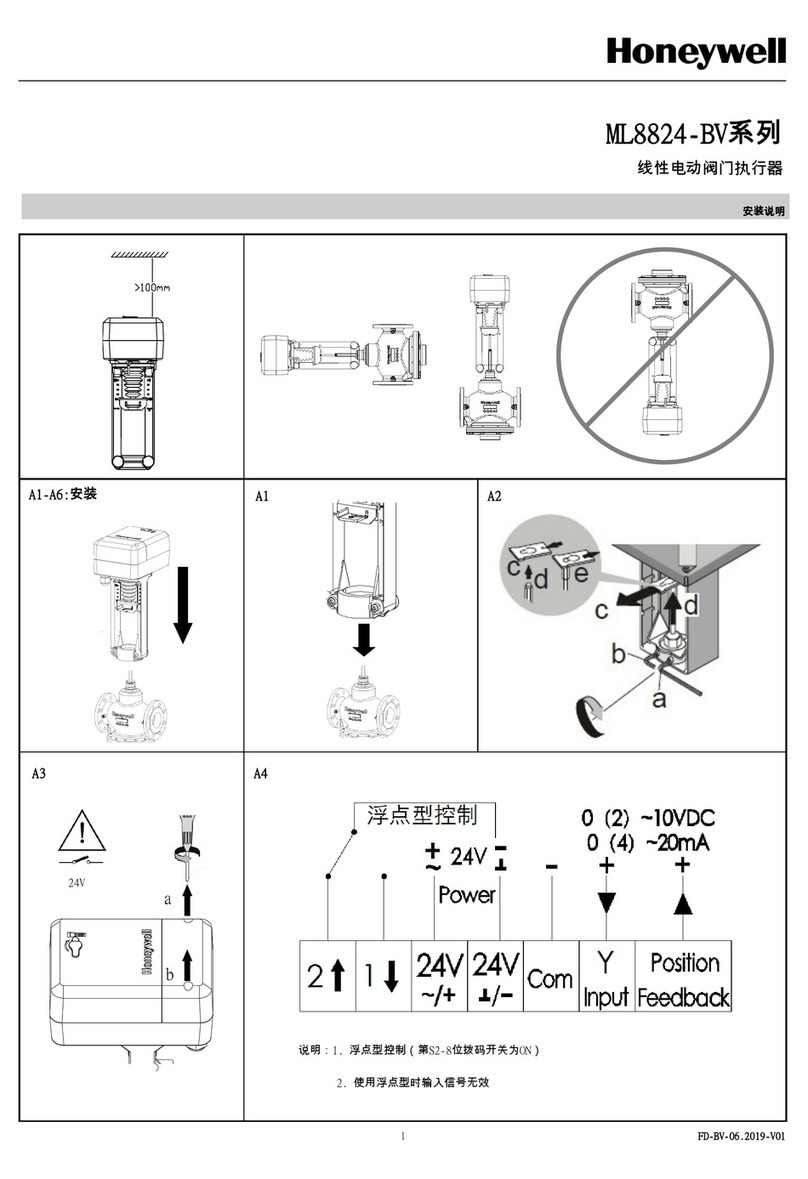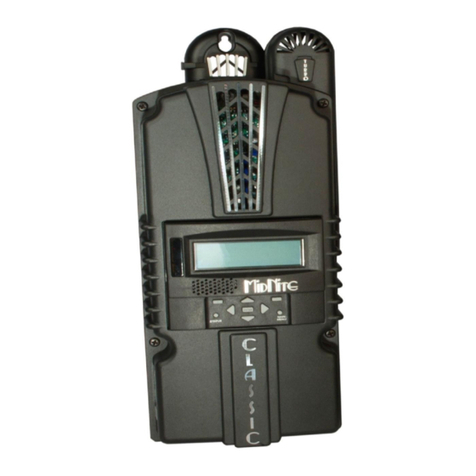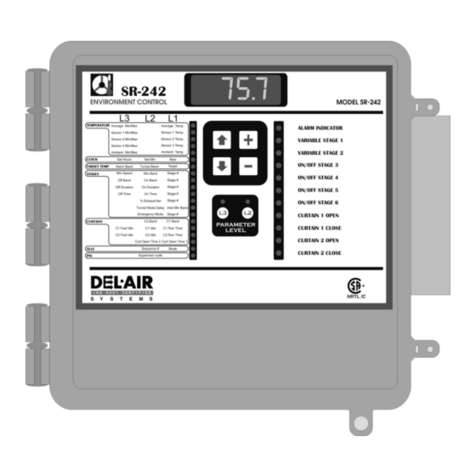Telwin DRIVE 9000 User manual

- 1 -
Cod.954207
(EN) EXPLANATION OF DANGER,
MANDATORY AND PROHIBITION SIGNS.
(IT) LEGENDA SEGNALI DI PERICOLO,
D’OBBLIGO E DIVIETO.
(FR) LÉGENDE SIGNAUX DE DANGER,
D’OBLIGATION ET D’INTERDICTION.
(ES) LEYENDA SEÑALES DE PELIGRO, DE
OBLIGACIÓN Y PROHIBICIÓN.
(DE) LEGENDE DER GEFAHREN-, GEBOTS-
UND VERBOTSZEICHEN.
(RU) ЛЕГЕНДАСИМВОЛОВ
БЕЗОПАСНОСТИ,ОБЯЗАННОСТИИ
ЗАПРЕТА.
(PT) LEGENDA DOS SINAIS DE PERIGO,
OBRIGAÇÃO E PROIBIDO.
(EL) ΛΕΖΑΝΤΑΣΗΜΑΤΩΝΚΙΝΔΥΝΟΥ,
ΥΠΟΧΡΕΩΣΗΣΚΑΙΑΠΑΓΟΡΕΥΣΗΣ.
(NL) LEGENDE SIGNALEN VAN GEVAAR,
VERPLICHTING EN VERBOD.
(HU) A VESZÉLY, KÖTELEZETTSÉG ÉS
TILTÁS JELZÉSEINEK FELIRATAI.
(RO) LEGENDĂINDICATOAREDE
AVERTIZARE A PERICOLELOR, DE
OBLIGAREŞIDEINTERZICERE.
(SV) BILDTEXT SYMBOLER FÖR FARA,
PÅBUD OCH FÖRBUD.
(DA) OVERSIGT OVER FARE, PLIGT OG
FORBUDSSIGNALER.
(NO) SIGNALERINGSTEKST FOR FARE,
FORPLIKTELSER OG FORBUDT.
(FI) VAROITUS, VELVOITUS, JA
KIELTOMERKIT.
(CS) VYSVĚTLIVKYKSIGNÁLŮM
NEBEZPEČÍ,PŘÍKAZŮMAZÁKAZŮM.
(SK) VYSVETLIVKY K SIGNÁLOM
NEBEZPEČENSTVA,PRÍKAZOMA
ZÁKAZOM.
(SL) LEGENDA SIGNALOV ZA NEVARNOST,
ZA PREDPISANO IN PREPOVEDANO.
(HR-SR) LEGENDA OZNAKA OPASNOSTI,
OBAVEZA I ZABRANA.
(LT) PAVOJAUS,PRIVALOMŲJŲ
IRDRAUDŽIAMŲJŲŽENKLŲ
PAAIŠKINIMAS.
(ET) OHUD, KOHUSTUSED JA KEELUD.
(LV) BĪSTAMĪBU,PIENĀKUMUUN
AIZLIEGUMAZĪMJUPASKAIDROJUMI.
(BG) ЛЕГЕНДАНАЗНАЦИТЕЗА
ОПАСНОСТ,ЗАДЪЛЖИТЕЛНИИЗА
ЗАБРАНА.
(PL) OBJAŚNIENIAZNAKÓW
OSTRZEGAWCZYCH,NAKAZUI
ZAKAZU.
(EN) ..........pag. 03
(IT)............pag. 06
(FR) ..........pag. 10
(ES) ..........pag. 14
(DE) ..........pag. 17
(RU)..........pag. 21
(PT)...........pag. 26
(EL)...........pag. 29
(NL) ..........pag. 33
(HU)..........pag. 37
(RO).......... pag. 41
(SV) ..........pag. 44
(DA)..........pag. 48
(NO).......... pag. 51
(FI)............pag. 55
(CS) ..........pag. 58
(SK)....... ...pag. 62
(SL)...........pag. 66
(HR-SR).... pag. 69
(LT) ........... pag. 73
(ET)...........pag. 76
(LV)...........pag. 80
(BG).......... pag. 83
(PL)...........pag. 88
(EN) DANGER OF EXPLOSION - (IT) PERICOLO ESPLOSIONE - (FR) RISQUE D’EXPLOSION
-(ES)PELIGROEXPLOSIÓN-(DE)EXPLOSIONSGEFAHR-(RU)ОПАСНОСТЬВЗРЫВА-
(PT)PERIGODE EXPLOSÃO-(EL)ΚΙΝΔΥΝΟΣΕΚΡΗΞΗΣ-(NL)GEVAARONTPLOFFING
- (HU) ROBBANÁS VESZÉLYE - (RO) PERICOL DE EXPLOZIE - (SV) FARA FÖR EXPLOSION
- (DA) SPRÆNGFARE - (NO) FARE FOR EKSPLOSJON - (FI) RÄJÄHDYSVAARA - (CS)
NEBEZPEČÍ VÝBUCHU - (SK) NEBEZPEČENSTVO VÝBUCHU - (SL) NEVARNOST
EKSPLOZIJE - (HR-SR) OPASNOST OD EKSPLOZIJE - (LT) SPROGIMO PAVOJUS - (ET)
PLAHVATUSOHT-(LV)SPRĀDZIENBĪSTAMĪBA-(BG)ОПАСНОСТОТЕКСПЛОЗИЯ-(PL)
NIEBEZPIECZEŃSTWOWYBUCHU.
(EN) GENERAL HAZARD - (IT) PERICOLO GENERICO - (FR) DANGER GÉNÉRIQUE - (ES)
PELIGROGENÉRICO-(DE)GEFAHRALLGEMEINERART-(RU)ОБЩАЯОПАСНОСТЬ
- (PT) PERIGO GERAL - (EL) ΓΕΝΙΚΟΣ ΚΙΝΔΥΝΟΣ - (NL) ALGEMEEN GEVAAR - (HU)
ÁLTALÁNOS VESZÉLY - (RO) PERICOL GENERAL - (SV) ALLMÄN FARA - (DA) ALMEN
FARE - (NO) GENERISK FARE STRÅLNING - (FI) YLEINEN VAARA - (CS) VŠEOBECNÉ
NEBEZPEČÍ-(SK)VŠEOBECNÉNEBEZPEČENSTVO-(SL)SPLOŠNANEVARNOST-(HR-
SR)OPĆAOPASNOST-(LT)BENDRASPAVOJUS-(ET)ÜLDINEOHT-(LV)VISPĀRĪGA
BĪSTAMĪBA-(BG)ОБЩИОПАСТНОСТИ-(PL)OGÓLNENIEBEZPIECZEŃSTWO.
(EN) DANGER OF CORROSIVE SUBSTANCES - (IT) PERICOLO SOSTANZE CORROSIVE
- (FR) SUBSTANCES CORROSIVES DANGEREUSES - (ES) PELIGRO SUSTANCIAS
CORROSIVAS-(DE)ÄTZENDEGEFAHRENSTOFFE-(RU)ОПАСНОСТЬКОРРОЗИВНЫХ
ВЕЩЕСТВ-(PT)PERIGOSUBSTÂNCIASCORROSIVAS-(EL)ΚΙΝΔΥΝΟΣΔΙΑΒΡΩΤΙΚΩΝ
ΟΥΣΙΩΝ - (NL) GEVAAR CORROSIEVE STOFFEN - (HU) MARÓ HATÁSÚ ANYAGOK
VESZÉLYE - (RO) PERICOL DE SUBSTANŢE COROSIVE - (SV) FARA FRÄTANDE
ÄMNEN - (DA) FARE, ÆTSENDE STOFFER - (NO) FARE: KORROSIVE SUBSTANSER -
(FI) SYÖVYTTÄVIEN AINEIDEN VAARA - (CS) NEBEZPEČÍ PLYNOUCÍ Z KOROSIVNÍCH
LÁTEK - (SK) NEBEZPEČENSTVO VYPLÝVAJÚCE Z KOROZÍVNYCH LÁTOK - (SL)
NEVARNOST JEDKE SNOVI - (HR-SR) OPASNOST OD KOROZIVNIH TVARI - (LT)
KOROZINIŲMEDŽIAGŲPAVOJUS-(ET)KORRUDEERUVATEMATERIAALIDEOHT-(LV)
KOROZIJASVIELUBĪSTAMĪBA-(BG)ОПАСНОСТОТКОРОЗИВНИВЕЩЕСТВА - (PL)
NIEBEZPIECZEŃSTWOWYDZIELANIASUBSTANCJIKOROZYJNYCH.
(EN) DANGER OF ELECTRIC SHOCK - (IT) PERICOLO SHOCK ELETTRICO - (FR)
RISQUE DE CHOC ÉLECTRIQUE - (ES) PELIGRO DESCARGA ELÉCTRICA - (DE)
STROMSCHLAGGEFAHR-(RU)ОПАСНОСТЬПОРАЖЕНИЯЭЛЕКТРИЧЕСКИМТОКОМ-
(PT)PERIGODECHOQUEELÉTRICO-(EL)ΚΙΝΔΥΝΟΣΗΛΕΚΤΡΟΠΛΗΞΙΑΣ-(NL)GEVAAR
ELEKTROSHOCK-(HU)ÁRAMÜTÉS VESZÉLYE- (RO)PERICOLDEELECTROCUTARE
- (SV) FARA FÖR ELEKTRISK STÖT - (DA) FARE FOR ELEKTRISK STØD - (NO) FARE
FOR ELEKTRISK STØT - (FI) SÄHKÖISKUN VAARA - (CS) NEBEZPEČÍ ZÁSAHU
ELEKTRICKÝMPROUDEM-(SK)NEBEZPEČENSTVOZÁSAHUELEKTRICKÝMPRÚDOM
-(SL) NEVARNOSTELEKTRIČNEGAUDARA-(HR-SR)OPASNOSTSTRUJNOGUDARA
- (LT) ELEKTROS SMŪGIO PAVOJUS - (ET) ELEKTRILÖÖGIOHT - (LV) ELEKTROŠOKA
BĪSTAMĪBA - (BG) ОПАСНОСТ ОТ ТОКОВ УДАР - (PL) NIEBEZPIECZEŃSTWO SZOKU
ELEKTRYCZNEGO.

- 2 -
(EN) EYE PROTECTIONS MUST BE WORN - (IT) OBBLIGO DI INDOSSARE OCCHIALI
PROTETTIVI - (FR) PORT DES LUNETTES DE PROTECTION OBLIGATOIRE - (ES)
OBLIGACIÓN DE USAR GAFAS DE PROTECCIÓN - (DE) DAS TRAGEN EINER SCHUTZBRILLE
ISTPFLICHT - (RU) ОБЯЗАННОСТЬНОСИТЬ ЗАЩИТНЫЕ ОЧКИ-(PT)OBRIGAÇÃO DE
VESTIR ÓCULOS DE PROTECÇÃO - (EL) ΥΠΟΧΡΕΩΣΗ ΝΑ ΦΟΡΑΤΕ ΠΡΟΣΤΕΤΕΥΤΙΚΑ
ΓΥΑΛΙΑ -(NL) VERPLICHTDRAGEN VANBESCHERMENDEBRIL-(HU)VÉDŐSZEMÜVEG
VISELETE KÖTELEZŐ - (RO) ESTE OBLIGATORIE PURTAREA OCHELARILOR DE
PROTECŢIE - (SV) OBLIGATORISKT ATT ANVÄNDA SKYDDSGLASÖGON - (DA) PLIGT
TIL AT ANVENDE BESKYTTELSESBRILLER - (NO) DET ER OBLIGATORISK Å HA PÅ SEG
VERNEBRILLEN-(FI)SUOJALASIENKÄYTTÖPAKOLLISTA-(CS)POVINNOSTPOUŽÍVÁNÍ
OCHRANNÝCHBRÝLÍ-(SK)POVINNOSŤPOUŽÍVANIA OCHRANNÝCHOKULIAROV-(SL)
OBVEZNA UPORABA ZAŠČITNIH OČAL - (HR-SR) OBAVEZNA UPOTREBA ZAŠTITNIH
NAOČALA-(LT)PRIVALOMADIRBTISUAPSAUGINIAISAKINIAIS-(ET)KOHUSTUSKANDA
KAITSEPRILLE-(LV)PIENĀKUMSVILKTAIZSARGBRILLES-(BG)ЗАДЪЛЖИТЕЛНОДАСЕ
НОСЯТПРЕДПАЗНИОЧИЛА-(PL)NAKAZNOSZENIAOKULARÓWOCHRONNYCH.
(EN) Symbol indicating separation of electrical and electronic appliances for refuse
collection. The user is not allowed to dispose of these appliances as solid, mixed urban
refuse, and must do it through authorised refuse collection centres. - (IT) Simbolo che indica
la raccolta separata delle apparecchiature elettriche ed elettroniche. L’utente ha l’obbligo di
nonsmaltirequestaapparecchiaturacomeriutomunicipalesolidomisto,madirivolgersiai
centri di raccolta autorizzati. - (FR) Symbole indiquant la collecte différenciée des appareils
électriqueset électroniques. L’utilisateurnepeut éliminer cesappareilsavec les déchets
ménagers solides mixtes, mais doit s’adresser à un centre de collecte autorisé. - (ES) Símbolo
que indica la recogida por separado de los aparatos eléctricos y electrónicos. El usuario
tiene la obligación de no eliminar este aparato como desecho urbano sólido mixto, sino de
dirigirse a los centros de recogida autorizados. - (DE) Symbol für die getrennte Erfassung
elektrischer und elektronischer Geräte. Der Benutzer hat pichtgemäß dafür zu sorgen,
daß dieses Gerät nicht mit dem gemischt erfaßten festen Siedlungsabfall entsorgt wird.
StattdessenmußereinederautorisiertenEntsorgungsstelleneinschalten.-(RU)Символ,
указывающий на раздельный сбор электрического и электронного оборудования.
Пользователь не имеет права выбрасывать данное оборудование в качестве
смешанноготвердогобытовогоотхода,аобязанобращатьсявспециализированные
центрысбора отходов.-(PT)Símboloqueindica a reunião separada das aparelhagens
eléctricaseelectrónicas.Outentetemaobrigaçãodenãoeliminarestaaparelhagemcomo
lixomunicipal sólidomisto,mas deve procuraroscentros derecolhaautorizados. - (EL)
Σύμβολο που δείχνει τη διαφοροποιημένη συλλογή των ηλεκτρικών κια ηλεκτρονικών
συσκευών.Οχρήστηςυποχρεούταιναμηνδιοχετεύειαυτήτησυσκευή σανμικτόστερεό
αστικόαπόβλητο,αλλάνααπευθύνεταισε εγκεκριμένακέντρα συλλογής.-(NL)Symbool
dat wijst op de gescheiden inzameling van elektrische en elektronische toestellen. De
gebruiker is verplicht deze toestellen niet te lozen als gemengde vaste stadsafval, maar
moet zich wenden tot de geautoriseerde ophaalcentra. - (HU) Jelölés, mely az elektromos
éselektronikus felszerelések szelektív hulladékgyűjtésétjelzi.Afelhasználókötelesezta
felszereléstnemavárositörmelékhulladékkalegyüttesengyűjteni,hanemerreengedéllyel
rendelkező hulladékgyűjtő központhoz fordulni. - (RO) Simbol ce indică depozitarea
separată a aparatelor electrice şi electronice. Utilizatorul este obligat să nu depoziteze
acestaparatîmpreunăcudeşeurilesolidemixtecisă-lpredeaîntr-uncentrudedepozitare
adeşeurilorautorizat.-(SV)Symbolsomindikerarseparatsopsorteringavelektriskaoch
elektroniska apparater. Användaren får inte sortera denna anordning tillsammans med
blandatfasthushållsavfall, utan måste vända sig till en auktoriserad insamlingsstation.-
(DA)Symbol,derstårforsærligindsamlingafelektriskeogelektroniskeapparater.Brugeren
har pligt til ikke at bortskaffe dette apparat som blandet, fast byaffald; der skal rettes
henvendelsetiletautoriseretindsamlingscenter.-(NO)Symbolsomangirseparatsortering
avelektriskeogelektroniskeapparater.Brukerenmåoppfylleforpliktelsenåikkekastebort
dette apparatet sammen med vanlige hjemmeavfallet, uten henvende seg til autoriserte
oppsamlingssentraler. - (FI) Symboli, joka ilmoittaa sähkö- ja elektroniikkalaitteiden erillisen
keräyksen. Käyttäjän velvollisuus on kääntyä valtuutettujen keräyspisteiden puoleen
eikävälittää laitetta kunnallisena sekajätteenä. -(CS)Symboloznačující separovaný sběr
elektrickýcha elektronickýchzařízení.Uživatel jepovinennezlikvidovat totozařízeníjako
pevnýsmíšenýkomunálníodpad,aleobrátitsesnímnaautorizovanésběrny.-(SK)Symbol
označujúci separovaný zber elektrických a elektronických zariadení. Užívateľ nesmie
likvidovaťtotozariadenieakopevnýzmiešanýkomunálnyodpad,alejepovinnýdoručiťho
doautorizovanýzberní.-(SL)Simbol,kioznačujeločenozbiranjeelektričnihinelektronskih
aparatov.Uporabniktegaaparatanesmezavrečikotnavadengospodinjskitrdenodpadek,
ampaksemoraobrnitinapooblaščenecentrezazbiranje.-(HR-SR)Simbolkojioznačava
posebnosakupljanjeelektričnihielektronskihaparata.Korisniknesmijeodložitiovajaparat
kao običan kruti otpad, već se mora obratiti ovlaštenim centrima za sakupljanje. - (LT)
Simbolis,nurodantisatskirųnebenaudojamųelektriniųir elektroniniųprietaisųsurinkimą.
Vartotojasnegaliišmesti šių prietaisųkaipmišrių kietųjų komunaliniųatliekų,bet privalo
kreiptisį specializuotus atliekų surinkimo centrus. - (ET) Sümbol,mistähistab elektri- ja
elektroonikaseadmete eraldi kogumist. Kasutaja kohustuseks on pöörduda volitatud
kogumiskeskuste poole ja mitte käsitleda seda aparaati kui munitsipaalne segajääde.
- (LV) Simbols, kas norāda uz to, ka utilizācija ir jāveic atsevišķi no citām elektriskajām
un elektroniskajām ierīcēm. Lietotāja pienākums ir neizmest šo aparatūru municipālajā
cieto atkritumu izgāztuvē, bet nogādāt to pilnvarotajā atkritumu savākšanas centrā. -
(BG) Символ, който означава разделно събиране на електрическата и електронна
апаратура. Ползвателят се задължава да не изхвърля тази апаратура като смесен
твърдотпадъквконтейнеритезасмет,поставениотобщината,атрябвадасеобърне
към специализираните за това центрове. - (PL) Symbol, który oznacza sortowanie
odpadówaparaturyelektrycznejielektronicznej.Zabraniasięlikwidowaniaaparaturyjako
mieszanychodpadówmiejskichstałych,obowiązkiemużytkownikajestskierowaniesiędo
autoryzowanychośrodkówgromadzącychodpady.

- 3 -
(EN)
INSTRUCTION MANUAL
WARNING: READ THE INSTRUCTION
MANUAL CAREFULLY BEFORE USING
THE STARTER!
1. GENERAL SAFETY USER
INSTRUCTIONS FOR THIS STARTER
In order to reduce the risk of personal
injury and damage to equipment, it is
highly recommended to comply with
all essential safety measures and
precautions when using the starter.
- Inexperienced and untrained
personnel should be properly
instructed before using the appliance.
- Children must be supervised to
prevent them from playing with the
appliance.
- Protect the eyes. Always wear
protective goggles when using
acid lead accumulators.
- Avoid contact with battery
acid. If an operator should be
sprayed or come into contact
with the acid, rinse the relative parts
immediately under clean running water.
Continue to rinse the area until the
physician arrives.
- It is important to connect the
cables with the poles in the
right direction:
First connect the red clamp to the
positive terminal on the vehicle battery (+
symbol).
Connect the black clamp to the vehicle
chassis or the negative clamp on the
battery, at a distance from the fuel pipe.
- Use the starter in well ventilated areas.
Do not attempt to use the starter when
there is gas or inammable liquids in
the vicinity.
- Do not allow the black and red clamps
to come into contact.
- FOR 12 VOLT SYSTEMS ONLY! This
device is destined for use on vehicles
running on 12 Volt electrical systems
only.
- USE IN EMERGENCY SITUATIONS
ONLY: do not use the starter instead of
the vehicle battery. Use it during start-up
operations only.
- Do not work alone. If there is an accident,
the assistant can be of aid to the operator.
- Avoid electrical shocks. Be
very cautious when applying
the clamps to non-insulated
conductors or bus bars. Avoid all body
contact with surfaces of tubes, radiators,
and metal power substations whilst
reading the vehicle battery voltage.
- Keep the work area clean at all times.
Untidy cumbersome areas can lead to
injuries.
- Protect the starter appropriately from all
possible damage. It must only be used as
indicated in this Instruction Manual.
- Ensure compliance with the indications
in the work area. Do not use in humid
or wet facilities. Never leave it out in the
rain. Always work in well lit areas.
- Keep out of reach of
children: they must never
be allowed to access work
areas or handle any machines,
instruments or extensions.
- Always wear suitable
clothing.Neverwear baggy
clothing or jewellery that
can get caught up in moving parts.
During all operations, the use of
electrically insulated protection
clothing and non-slip boots must be
worn at all times. Persons with long
hair must tie it back and wear a hair
net.
- Only experts are allowed to do repair
work on the starter as it involves
signicant risk levels for inexperienced
workers.
- Replacing parts and accessories. When
performing maintenance operations,
replace with identical and original spare
parts only. Use of non-original spare
parts invalidates all warranties.
- Make sure that the device is always
positioned in a stable and well supported
manner.
Never climb over cables or electrical
structures.
- Careful attention must be paid during
maintaining work on the starter. Check
the condition of cables on a regular basis
and if any damage is detected, have the
same repaired by an authorised and
qualied technician.
- Check there are no damaged parts.
Before using this starter, carefully
check that all seemingly damaged parts

- 4 -
and assess whether or not they can
operate correctly. Check that the cables
are securely fastened to the starter.
Remember that only authorised and
qualied technicians are allowed to repair
or replace damaged parts.
1.1 SPECIAL WARNINGS AND SAFETY
PRECAUTIONS ON THE USE OF THE
LITHIUM BATTERIES INSIDE THE
STARTER
Failure to observe the following rules can
cause breakage, overheating, bulging, re
outbreak or explosion of the battery inside
the starter:
- Never open the starter casing under
any circumstances.
- Do not charge the battery in direct
sunlight, near ames or in similar
conditions.
- Do not use the starter or position it in the
vicinity of heaters, near ames or in other
hot areas.
- Only use the charger supplied with the
device to charge the starter.
- Do not throw the starter into a re or heat
it up.
- Do not invert the positive “+” and negative
“-” connection polarities.
- Do not short-circuit the starter terminals.
- Do not perforate the starter casing with
drill bits, do not hit it with a hammer or
stand on it.
- Do not position the starter inside stoves,
microwave ovens etc.
- Do not throw the starter or cause high
impacts.
- Do not modify or tamper with the starter
casing.
- Refrain from using the starter if it emits
strange smells, heats up or deforms
during use, charging or storage.
- If the starter emits strange smells or
leaks acid, immediately move the device
away from any heat sources or free
burning ames.
- In case of contact of the starter battery
acid on the skin or clothing, rinse with
copious amounts of water.
- In case of contact of the starter battery
acid with the eyes, rinse immediately
with copious amounts of water and call a
doctor.
Keeping this manual.
The manual should be read, paying attention
to all the warnings and safety precautions
to be taken when using and maintaining
the device, the list of components and all
technical specications.
Please keep this manual in a secure and
dry place for future reference.
2. INTRODUCTION AND GENERAL
DESCRIPTION
Intended use
Multi-functional, portable, battery-powered
starter. Ideal for anyone needing an
emergency starter. Its applications include
use on motorcycles, automobiles, boats
and many more.
Fully compatible with any 12-volt starter
system.
The starter uses LITHIUM BATTERIES;
this makes the device extremely compact
and easy to handle.
The multi-functional starter is also equipped
with a powerful LED light and four outputs
to power and/or charge 5V/12V/19V
electronic devices.
2. INTRODUCTION AND GENERAL
DESCRIPTION
Intended use
Multi-functional, portable, battery-powered
starter. Ideal for anyone needing an
emergency starter. Its applications include
use on motorcycles, automobiles, boats
and many more.
Fully compatible with any 12-volt starter
system.
The starter is tted with special cables
with clamps that protect the user and the
equipment during the starter phase:
- no sparks generated;
- short circuit protection between the
clamps;
- protection against polarity inversion.
The starter uses LITHIUM BATTERIES;
this makes the device extremely compact
and easy to handle.
The multi-functional starter is also equipped
with a powerful LED light and USB port to
power and/or charge 5V electronic devices.
Description(gureA):
A-1. Multifunctional starter.
A-2. Starter clamps.
A-3. Correct clamp connection and start
enabled indicator LEDs.
A-4. “Boost” push-button.
A-5. 5V charge or output cable.
A-6. USB adapter with cigarette lighter
type 12V jack plug.

- 5 -
A-7. Starter charging mini USB input port.
A-8. 5V/2A USB output.
A-9. LED light.
A-10. Starter clamps output socket (ref.
A-2)
A-11. Internal battery charge status
indicator LED.
A-12. ON/OFF switch for the charge level,
to control the output port (ref. A-6)
and the LED light.
3. INSTALLATION
POSITIONING THE STARTER
When using the starter, position it on a
horizontal, at and stable surface.
4. OPERATING INFORMATION
4.1 How to use the starter:
WARNING: follow
these instructions
meticulously, and
alwaysintheordergivenbelow!
Always prevent the black and red
clamps from touching each other or a
common cable!
- Make sure that the vehicle or boat to be
started is switched off (switch or ignition
key in the OFF position).
- Connect the red clamp POS. (+) to the
battery terminal POS. (+), then connect
the black clamp NEG. (-) to the vehicle
chassis or the battery terminal NEG. (-),
at a distance from the fuel pipe.
- Check that the Red LED seen in g. A-3
is OFF; if this is not the case, carefully
check that the clamp polarities are
connected correctly and the clamps
are not short-circuited by common
conductive parts.
- Check that only the Green LED seen in
g. A-3 is ON;
- If all the LEDs are OFF, a situation
that occurs when the vehicle battery is
too low, it is possible to force the start
operation by pressing and holding the
“BOOST” button seen in g. A-4 for three
seconds until the Green LED comes on.
WARNING: failure to follow
these rules may compromise
the operating life of the
device:
- Turn the vehicle ignition to the start
position for no more than 3 seconds.
- If the vehicle or boat does not start,
wait at least 15 seconds before trying
again.
- If the vehicle or boat still does not
start, wait at least 2 minutes before
trying again.
After a successful start, with the engine
running, follow the sequence of instructions
below with great care:
- Disconnect the black clamp (negative)
from the vehicle.
- Disconnect the red clamp (positive) from
the vehicle.
- Remove the starter cable connector from
the starter
- Replace the cables and the starter in
their seats inside the case.
It is highly recommended to recharge the
starter as soon as possible.
4.2 Using the starter as a power and/or
chargingdevice:
- Insert the output cable terminal (g.A-5)
into the appropriate USB port on the
starter (g.A-8);
- Press the ON button seen in gureA-12
once;
- Insert the other cable terminal into the
device to be powered;
4.3 Using the LED lights
- Press and hold the ON button (g.
A-12) for a few seconds to enable the
continuous LED light function.
The press the button in the following
sequence:
- once to start the blinking light;
- twice to start the emergency signal;
- three times to switch the light OFF.
5. CHARGING
Important!Toachievemaximumbattery
performance, always charge before use,
then after every time it is used and, in
anycase,atleastevery3months.
It is possible to charge the unit using the
relative cable (g.A-5) connecting the mini
USB terminal to the starter charge socket
(g.A-7) and the other terminal to a USB
output source (e.g. a computer) or to the
12V car cigarette lighter socket using the
adaptor seen in gureA-6.
Press the button seen in g.A-12 once to
check whether the battery needs charging.
The LEDs seen in g. A-11 indicate the
charge status of the battery, which light up
as the status increases:
- one LED only: low battery;
- all LEDs are on: fully charged battery.

- 6 -
6.DISPOSINGOFTHEBATTERY
When the starter battery is completely
run down it should be sent to a re-cycling
facility. In some countries this is mandatory.
Contact the local special refuse authority for
information on recycling.
WARNING:
Do not burn the battery to dispose of it. This
could cause an explosion. Before disposing
of the battery, apply insulating tape to the
bare terminals to prevent shorting. Do not
expose the battery to intense heat or re as
this could cause an explosion.
SPECIFICATIONS: DRIVE MINI
Type of battery:
- rechargeable factory-sealed lithium-
polymer battery.
Battery capacity:
- 6500 mAh
Starter current (12V):
- 300A
- (500A peak)
Starter cables:
-polarised terminals.
- copper.
- diameter 5.3mm2(10AWG).
- length 250mm
- PVC insulated
Light:
- LED
Input and output sockets:
- one 5V – 2A USB output port
- one (5V – 2A mini USB) input port for
charging.
Characteristics:
- ON/OFF switch.
- output protection against polarity
reversal.
- automatic charging level reset switch.
- charge level and fully charged indicator
LEDs.
- continuous, blinking and emergency
LEDs.
Weight:
- 200g
Accessories included (g. A):
- USB adapter with cigarette lighter type
12V jack plug (g.A-6).
- Input/output connection cable (g.A-5).
(IT)
MANUALE ISTRUZIONE
ATTENZIONE:
PRIMA DI UTILIZZARE L’AVVIATORE
LEGGERE ATTENTAMENTE IL
MANUALE DI ISTRUZIONE!
1. SICUREZZA GENERALE PER L’USO
DI QUESTO AVVIATORE
Allo scopo di ridurre il rischio di lesioni
personali e di danni all’attrezzatura, vi
raccomandiamo di usare l’avviatore
rispettando sempre le fondamentali
misure precauzionali sulla sicurezza.
- Le persone inesperte devono essere
opportunamente istruite prima di
utilizzare l’apparecchio.
- I bambini devono essere sorvegliati
per sincerarsi che non giochino con
l’apparecchio.
- Proteggere gli occhi.
Indossare sempre occhiali
protettivi quando si lavora con
accumulatori al piombo acido.
- Evitare il contatto con l’acido
della batteria. Nel caso si
venga investiti o si venga a
contatto con l’acido, risciacquare
immediatamente la parte interessata con
acqua pulita. Continuare a risciacquare
no all’arrivo del medico.
- È importante collegare i cavi
alle corrette polarità:
Collegare la pinza di carica
di colore rosso al morsetto positivo della
batteria (simbolo +).
Collegare la pinza di carica di colore
nero al telaio del veicolo o al morsetto
negativo della batteria, lontano dal
condotto del carburante.
- Usare l’avviatore in aree ben ventilate.
Non tentare di effettuare avviamenti
quando ci si trova in mezzo a gas o
liquidi inammabili.
- Impedire alle pinze nere e rosse di
venire in contatto.
- SOLO PER SISTEMI A 12 VOLT! Usare
solo su veicoli con sistemi elettrici a 12
volt.
- USARE SOLO IN CASO DI
EMERGENZA: non usare l’avviatore
al posto della batteria del veicolo.

- 7 -
Usare esclusivamente per effettuare
l’avviamento.
- Evitare di lavorare da soli. Nel caso di
incidente l’assistente può prestare aiuto.
- Evitare le scosse elettriche.
Usare estrema cautela
nell’applicare le pinze a dei
conduttori o barre di distribuzione non
isolati. Evitare il contatto corporeo con
superci quali tubi, radiatori e armadi
metallici mentre si sta misurando il valore
di tensione della batteria del veicolo.
- Tenere pulita l’area di lavoro. Le aree
ingombre possono provocare lesioni.
- Evitare di danneggiare l’avviatore.
Utilizzare esclusivamente come
specicato in questo manuale.
- Rispettare le indicazioni relative all’area
di lavoro. Non usare in luoghi umidi
o bagnati. Non esporre alla pioggia.
Lavorare in aree bene illuminate.
- Tenere lontani i bambini:
non dovrà mai essere loro
consentito di accedere alle
aree di lavoro né di maneggiare
macchine, strumenti o prolunghe.
- Vestirsi in maniera
appropriata. Non indossare
abiti larghi o gioielli che
possano impigliarsi in parti mobili.
Duranteilavorisiraccomandal’usodi
abiti protettivi isolati elettricamente
nonché di calzature antisdrucciolo.
Nel caso di capigliatura lunga
indossarecopricapocontenitivi.
-Le riparazioni dell’avviatore devono
essere eseguite esclusivamente da
personale esperto altrimenti potrebbero
comportare pericoli considerevoli per
l’utilizzatore.
-Sostituzione di parti ed accessori.
Nell’effettuare la manutenzione, usare
solo parti di ricambio identiche e originali.
L’uso di qualsiasi altro pezzo renderà
nulla la garanzia.
-Mantenere in ogni momento un’
adeguata posizione di stabilità e punti
stabili di appoggio.
Non spostarsi sopra cavi o strutture
elettriche.
-Effettuare con cura la manutenzione
dell’avviatore. Controllarne
periodicamente i cavi e nel caso di danni
fare eseguire la riparazione ad un tecnico
autorizzato e qualicato.
- Vericare che non ci siano parti
danneggiate. Prima di utilizzare questo
avviatore, controllare attentamente tutte
le parti che sembrano danneggiate per
stabilire se siano in grado di funzionare
correttamente. Controllare che i cavi
siano ben ssati all’avviatore. Si
raccomanda di far riparare o sostituire
le parti danneggiate da un tecnico
autorizzato e qualicato.
1.1 PARTICOLARI AVVERTENZE E
PRECAUZIONI SULLA SICUREZZA PER
L’UTILIZZO DELLE BATTERIE AL LITIO
CONTENUTE NELL’AVVIATORE
L’inosservanza delle seguenti regole può
provocare la rottura, il riscaldamento, il
rigonamento, l’incendio e l’esplosione
della batteria all’interno dell’avviatore:
- Non aprire l’involucro dell’avviatore
pernessunmotivo.
- Non caricare l’avviatore al sole, in
prossimità di amme o in condizioni
simili.
- Non utilizzare l’avviatore o lasciarlo
vicino a stufe, amme o in altri luoghi
caldi.
- Caricare l’avviatore utilizzando
esclusivamente l’alimentatore
per la ricarica in dotazione con
l’apparecchiatura.
- Non gettare l’avviatore nel fuoco o
riscaldarlo.
- Non invertire le polarità dei terminali
positivo “+” e negativo “-”.
- Non cortocircuitare i terminali
dell’avviatore.
- Non forare l’involucro dell’avviatore con
punte, non colpirlo col martello, non
calpestarlo.
- Non collocare l’avviatore all’interno di
forni, forni a microonde, ecc.
- Non lanciare l’avviatore o provocare forti
urti.
- Non manomettere o modicare
l’involucro dell’avviatore.
- Se durante l’uso, la carica o la
conservazione l’avviatore emana
strani odori, si scalda o si deforma
l’apparecchiatura non deve essere più
utilizzato.
- Se l’avviatore perde acido o emana strani
odori l’apparecchiatura deve essere
subito allontanata da sorgenti di calore o
da amme libere.
- In caso di contatto con l’acido della
batteria dell’avviatore e la pelle o i vestiti,
subito sciacquare abbondantemente con
acqua.

- 8 -
- In caso di contatto con l’acido della
batteria dell’avviatore e gli occhi, subito
sciacquare abbondantemente con acqua
e contattare il medico.
Conservarequestomanuale.
Il manuale è necessario per consultare
le avvertenze e precauzioni relative
alla sicurezza, per le procedure di
funzionamento e di manutenzione, per
l’elenco dei componenti e per le speciche
tecniche.
Conservare il manuale per eventuali future
consultazioni in un luogo sicuro ed asciutto.
2. INTRODUZIONE E DESCRIZIONE
GENERALE
Usoprevisto
Avviatore portatile multifunzione a batteria.
L’ideale per chiunque abbia bisogno di un
avviatore d’emergenza. Le sue applicazioni
includono motoveicoli, autoveicoli,
imbarcazioni e altro ancora.
Pienamente compatibile con qualsiasi
sistema di avviamento a 12 volt.
L’avviatore è dotato di particolari cavi
con pinze che proteggono l’utilizzatore
e l’apparecchiatura durante la fase di
avviamento:
- nessuna generazione di scintille;
- protezione da cortocircuiti tra le pinze;
- protezione da inversione di polarità.
L’avviatoreutilizzaBATTERIEALLITIO;
ciò consente al dispositivo di essere
estremamente maneggevole e compatto.
L’avviatore multifunzione è inoltre dotato
di una potente luce a led e di una porta
USB di uscita per alimentare e/o caricare
i dispositivi elettronici a 5V.
Descrizione(guraA):
A-1. Avviatore multifunzione.
A-2. Pinze di avviamento.
A-3. Led segnalazione corretto
collegamento pinze e avviamento
abilitato.
A-4. Pulsante “boost”.
A-5. Cavo di uscita o di ricarica 5V.
A-6. Adattatore USB con spina jack 12V
tipo accendisigari.
A-7. Ingresso mini USB per la carica
dell’avviatore.
A-8. Uscita USB 5V/2A.
A-9. Luce LED.
A-10. Presa di uscita per le pinze di
avviamento (rif. A-2)
A-11. Led di segnalazione dello stato di
carica della batteria interna.
A-12. Tasto ON/OFF per il livello di carica,
per il comando della porta di uscita
(rif. A-6) e della luce led.
3. INSTALLAZIONE
UBICAZIONE DEL’AVVIATORE
Durante il funzionamento posizionare in
modo stabile l’avviatore appoggiandolo su
una supercie orizzontale e piana.
4. FUNZIONAMENTO
4.1Utilizzodell’avviatore:
ATTENZIONE:
eseguire le istruzioni
seguendo
scrupolosamente l’ordine sotto
riportato!
Impedire sempre alle pinze nera e rossa
di venire in contatto o di toccare un
conduttore comune!
- Accertarsi che il veicolo o l’imbarcazione
da avviare sia spenta (interruttore o
chiave di accensione in posizione OFF).
- Collegare prima la pinza rossa POS.
(+) al morsetto POS. (+) della batteria,
poi collegare la pinza nera NEG. (-) al
telaio del veicolo o al morsetto NEG. (-)
della batteria, lontano dal condotto del
carburante.
- Vericare che il Led Rosso di g. A-3
sia spento; in caso contrario vericare
attentamente i collegamento delle pinze
alle corrette polarità e di non avere
le pinze in cortocircuito tramite parti
conduttive in comune.
- Vericare che il solo Led Verde di g. A-3
sia acceso;
- Nel caso tutti i led siano spenti,
situazione che si verica con batteria del
veicolo troppo scarica, è possibile forzare
l’operazione di avviamento premendo
per tre secondi il pulsante “BOOST” di
g. A-4 ottenendo così l’accensione del
Led Verde.
ATTENZIONE: l’inosservanza
delle seguenti regole può
compromettere la durata nel
tempo dell’apparecchiatura:
- Portare l’interruttore del veicolo in
posizionediavviamentoperuntempo
non superiore ai 3 secondi.
- Sel’autool’imbarcazionenonsiavvia,
aspettare almeno 15 secondi prima di
riprovareunsecondotentativo.
- Sedopoilsecondotentativo,ilmotore
ancoranonsiavviaaspettarealmeno

- 9 -
2minutiprimadiriprovare.
Dopo l’avviamento e a motore in funzione,
seguire rigorosamente la sequenza di
istruzioni:
- Scollegare la pinza nera (negativo) dal
veicolo.
- Scollegare la pinza rossa (positivo) dal
veicolo.
- Slare dall’avviatore il connettore dei cavi
di avviamento
- Riporre i cavi e l’avviatore nell’apposita
sede all’interno della custodia.
Si raccomanda di caricare l’avviatore
appena possibile.
4.2 Utilizzo dell’ avviatore come
dispositivodialimentazionee/ocarica:
- Inserire il terminale del cavo di uscita
(g. A-5) nella porta di uscita USB
dell’avviatore (g.A-8);
- Premere una volta il tasto ON di gura
A-12;
- Inserire l’altro terminale del cavo nel
dispositivo da alimentare;
4.3 Utilizzo delle luci LED
-Mantenere premuto il tasto ON (g.
A-12) per qualche secondo per attivare
la luce led continua.
Premere quindi in sequenza il tasto:
- una volta per attivare la luce
intermittente;
- due volte per attivare la segnalazione
di emergenza;
- tre volte per spegnere la luce.
5. CARICA
Importante! Per ottenere le massime
prestazioni della batteria, caricare prima
dell’uso, dopo ogni uso e comunque
ogni 3 mesi.
È possibile caricare l’unità tramite l’apposito
cavo (g.A-5) collegando il terminale mini
USB alla presa di ricarica dell’avviatore (g.
A-7) e l’altro terminale ad una sorgente con
uscita USB (a es. un computer) oppure alla
presa accendisigari 12V della vettura per
mezzo dell’adattatore diguraA-6.
Per controllare se la batteria deve essere
caricata premere una volta il pulsante di
g.A-12.
I led di g.A-11segnalano lo stato di carica
della batteria, crescente all’aumentare del
numero di led accesi:
- un solo led acceso: la batteria è scarica;
- tutti i led accesi: la batteria è
completamente carica.
6.SMALTIMENTODELLABATTERIA
La batteria esausta dell’avviatore dovrebbe
essere riciclata. In alcuni stati questo è
obbligatorio. Contattare le autorità locali
per i riuti solidi per ricevere informazioni
relative al riciclaggio.
AVVERTENZA:
Non smaltire la batteria bruciandola. Questo
potrebbe causare un’esplosione. Prima
di smaltire la batteria, coprire i terminali
scoperti con nastro isolante adeguato, allo
scopo di evitare i corti circuiti. Non esporre
la batteria a calore intenso o a fuoco poiché
questo potrebbe causare un’esplosione.
SPECIFICHE: DRIVE MINI
Tipo di batterie:
- batteria al litio-polimero, ermetica,
ricaricabile.
Capacità della batteria:
- 6500 mAh
Corrente di avviamento (12V):
- 300A
- (500A di picco)
Cavi di avviamento:
-terminali polarizzati.
- rame.
- sezione 5.3mm2(10AWG).
- lunghezza 250mm
- isolati in PVC
Luce:
- LED
Prese di ingresso e uscita:
- una presa di uscita USB 5V - 2A
- una presa di ingresso (mini USB 5V - 2A)
per la ricarica.
Caratteristiche:
- interruttore ON / OFF.
- protezione in uscita contro l’inversione di
polarità.
- interruzione automatica livello di carica.
- led di segnalazione livello di carica e
necarica.
- luce led continua, intermittente e di
emergenza.
Peso:
- 200g
Accessori inclusi (g. A):
- Adattatore USB con spina jack
accendisigari 12V (g.A-6).
- Cavo di collegamento input/output (g.
A-5).

- 10 -
(FR)
MANUEL D’INSTRUCTIONS
ATTENTION : AVANT D’UTILISER LE
DÉMARREUR, LIRE ATTENTIVEMENT
LE MANUEL D’INSTRUCTION !
1. SÉCURITÉ GÉNÉRALE POUR
L’UTILISATION DE CE DÉMARREUR
Dans le but de réduire le risque de
lésions personnelles et de dommages à
l’équipement,nousvousrecommandons
d’utiliser le démarreur en respectant
toujours les mesures fondamentales de
précaution pour la sécurité.
- Les personnes non expertes doivent
être opportunément instruites avant
d’utiliser l’appareil.
- Les enfants doivent être surveillés
pour s’assurer qu’ils ne jouent pas
avecl’appareil.
- Protéger les yeux. Toujours
porter des lunettes de
protection quand on travaille
avec des accumulateurs au plomb acide.
- Éviter le contact avec l’acide
de la batterie. Si l’on est
éclaboussé ou que l’on entre
en contact avec l’acide, rincer
immédiatement la partie concernée avec
de l’eau propre. Continuer à rincer
jusqu’à l’arrivée du médecin.
- Il est important de brancher
les câbles aux bonnes
polarités :
Brancher la pince de chargement de
couleur rouge à la borne positive de la
batterie (symbole +).
Brancher la pince de chargement de
couleur noire au châssis de la voiture ou
à sa borne négative, loin du conduit du
carburant.
- Utiliser le démarreur dans des
zones bien ventilées. Ne pas tenter
d’effectuer de démarrages quand
on se trouve au milieu de gaz ou de
liquides inammables.
- Empêcher les pinces noires et rouges
d’entrer en contact.
- SEULEMENT POUR SYSTÈME À 12
VOLTS ! Utiliser seulement sur des
véhicules avec systèmes électriques à
12 volts.
- UTILISER UNIQUEMENT EN CAS
D’URGENCE : ne pas utiliser le
démarreur à la place de la batterie du
véhicule. Utiliser exclusivement pour
effectuer le démarrage.
- Éviter de travailler seul. En cas d’incident,
l’assistant peut prêter renfort.
- Éviter les secousses
électriques. Faire très
attention en appliquant les
pinces à des conducteurs ou à des
barres de distribution non isolés. Éviter le
contact corporel avec des surfaces
comme des tuyaux, des radiateurs et des
armoires métalliques pendant que l’on
est en train de mesurer la valeur de
tension de la batterie du véhicule.
- Maintenir l’aire de travail propre. Les
aires encombrées peuvent provoquer
des lésions.
- Éviter d’endommager le démarreur.
Utiliser exclusivement selon les
spécications de ce manuel.
- Respecter les indications concernant
l’aire de travail. Ne pas utiliser dans
des lieux humides ou mouillés. Ne pas
exposer à la pluie. Travailler dans un lieu
bien éclairé.
- Conserverloindesenfants:
ilsnedoiventjamaisavoirla
possibilité d’accéder aux
aires de travail, ni de manipuler les
machines, les instruments ou les
rallonges.
- S’habiller de manière
appropriée. Ne pas porter
de vêtements larges ou de
bijoux qui peuvent s’accrocher aux
parties mobiles. Durant les travaux,
nous recommandons l’utilisation de
vêtements de protection isolés
électriquement ainsi que de
chaussures antidérapantes. En cas de
longue chevelure, porter un let à
cheveux.
- Les réparations du démarreur doivent
être exécutées exclusivement par du
personnel expert, sinon elles pourraient
comporter des dangers considérables
pour l’utilisateur.
-Substitution de pièces et accessoires.
En effectuant la maintenance, utiliser
uniquement des pièces détachées
identiques et originales. L’utilisation de
toute autre pièce rendra la garantie nulle.
- Conserver à tout moment une position de
stabilité adéquate et des points d’appui

- 11 -
stables.
Ne pas se déplacer sur des câbles ou
des structures électriques.
- Effectuer avec soin l’entretien du
démarreur. En contrôler périodiquement
les câbles et, en cas de dommages, faire
exécuter la réparation à un technicien
autorisé et qualié.
- Vérier qu’il n’y a pas de parties
endommagées. Avant d’utiliser ce
démarreur, contrôler attentivement toutes
les parties qui semblent endommagées
pour établir si elles sont en mesure de
fonctionner correctement. Contrôler que
les câbles sont bien xés au démarreur.
Nous recommandons de faire réparer ou
substituer les parties endommagées par
un technicien autorisé et qualié.
1.1 AVERTISSEMENTS ET
PRÉCAUTIONS PARTICULIERS SUR LA
SÉCURITÉ POUR L’UTILISATION DES
BATTERIES AU LITHIUM CONTENUES
DANS LE DÉMARREUR
Le non-respect des règles suivantes peut
provoquer la rupture, le réchauffement, le
gonement, l’incendie et l’explosion de la
batterie à l’intérieur du démarreur :
- N’ouvrir l’enveloppe du démarreur
sous aucun prétexte.
- Ne pas charger le démarreur au soleil,
à proximité de ammes ou dans des
conditions similaires.
- Ne pas utiliser, ou laisser, le démarreur
près de poêles, ammes ou dans
d’autres lieux chauds.
- Charger le démarreur en utilisant
exclusivement l’alimentateur fourni avec
l’appareil pour sa recharge.
- Ne pas jeter le démarreur dans le feu ou
le réchauffer.
- Ne pas inverser les polarités des
terminaux positif « + » et négatif « - ».
- Ne pas court-circuiter les terminaux du
démarreur.
- Ne pas percer l’enveloppe du démarreur
avec des pointes, ne pas le frapper avec
un marteau, ne pas marcher dessus.
- Ne pas placer le démarreur à l’intérieur
de fours, fours à microondes, etc.
- Ne pas lancer le démarreur ou lui
provoquer de forts chocs.
- Ne pas altérer ou modier l’enveloppe du
démarreur.
- Si durant son utilisation, sa charge ou sa
conservation, le démarreur émane des
odeurs étranges, chauffe ou se déforme,
l’appareil ne doit plus être utilisé.
- Si le démarreur perd de l’acide ou émane
des odeurs étranges, l’appareil doit être
éloigné tout de suite des sources de
chaleur ou des ammes libres.
- En cas de contact avec l’acide de la
batterie du démarreur et la peau ou les
vêtements, rincer immédiatement et
abondamment avec de l’eau.
- En cas de contact entre l’acide de la
batterie du démarreur et les yeux, rincer
immédiatement et abondamment avec
de l’eau, et contacter le médecin.
Conserverdemanuel.
Le manuel est nécessaire pour consulter
les avertissements et les précautions
relatives à la sécurité, pour les procédures
de fonctionnement et d’entretien, pour la
liste des composants et pour les techniques
spéciques.
Conserver le manuel pour d’éventuelles
consultations futures dans un lieu sûr et
sec.
2. INTRODUCTION ET DESCRIPTION
GÉNÉRALE
Utilisationprévue
Démarreur portable multifonction à batterie.
L’idéal pour quiconque a besoin d’un
démarreur d’urgence. Ses applications
incluent des motos, des autos, des
embarcations et autre.
Entièrement compatible avec tout système
de démarrage à 12 volts.
Le démarreur est équipé de câbles
spéciques avec pinces qui protègent
l’utilisateur et l’appareillage durant la phase
de démarrage :
- aucune génération d’étincelles ;
- protection contre les courts-circuits entre
les pinces ;
- protection contre l’inversion de polarité.
Le démarreur utilise des BATTERIES AU
LITHIUM ; cela permet au dispositif d’être
extrêmement maniable et compact.
Le démarreur multifonction est en outre
équipé d’une puissante lumière à LED et
d’un port USB de sortie pour alimenter et
/ ou charger les dispositifs électroniques
à 5V.
Description(gureA):
A-1. Démarreur multifonction.
A-2. Pinces de démarrage.
A-3. LED de signalisation de
branchement correct des pinces et

- 12 -
de démarrage habilité.
A-4. Bouton « boost ».
A-5. Câble de sortie ou de recharge 5V.
A-6. Adaptateur USB avec che jack
12V type allume-cigares.
A-7. Entrée mini USB pour la charge du
démarreur.
A-8. Sortie USB 5V / 2A.
A-9. Lumière LED.
A-10. Prise de sortie pour les pinces de
démarrage (réf. A-2)
A-11. LED de signalisation de l’état de
charge de la batterie interne.
A-12. Touche ON / OFF pour le niveau de
charge, pour la commande du port
de sortie (réf. A-6) et de la lumière
LED.
3. INSTALLATION
POSITION DU DÉMARREUR
Durant son fonctionnement, placer le
démarreur de façon stable en l’appuyant
sur une surface horizontale et plane.
4. FONCTIONNEMENT
4.1 Utilisation du démarreur :
ATTENTION :
exécuter les
instructions en
suivant scrupuleusement l’ordre
reporté ci-dessous !
Toujours empêcher aux pinces noire et
rouge d’entrer en contact ou de toucher
un conducteur commun !
- S’assurer que le véhicule ou
l’embarcation à démarrer est éteint
(interrupteur ou clé d’allumage en
position OFF).
- Brancher d’abord la pince rouge POS.
(+) à la borne POS. (+) de la batterie,
puis brancher la pince noire NEG. (-)
au châssis du véhicule ou à la borne
NEG. (-) de la batterie, loin du conduit
du carburant.
- Vérier que la LED rouge de la g.
A-3 est éteinte ; dans le cas contraire,
vérier attentivement le branchement
des pinces aux bonnes polarités et
vérier de ne pas avoir les pinces
en court-circuit à travers des parties
conductrices en commun.
- Vérier que seule la LED verte de la g.
A-3 est allumée ;
- Si toutes les LED sont éteintes, situation
qui a lieu avec la batterie du véhicule
trop déchargée, il est possible de forcer
l’opération de démarrage en appuyant
pendant trois secondes sur le bouton
« BOOST » de la g. A-4 pour obtenir
l’allumage de la LED verte.
ATTENTION : le non-respect
des règles suivantes peut
compromettre la durée dans
le temps de l’appareil :
- Porter l’interrupteur du véhicule en
position de démarrage pendant un
temps non supérieur à 3 secondes.
- Si l’auto ou l’embarcation ne démarre
pas, attendre au moins 15 secondes
avant de réessayer une seconde
tentative.
- Si, après la seconde tentative, le
moteur ne démarre toujours pas,
attendre au moins 2 minutes avant
de recommencer.
Après le démarrage et avec le moteur
en fonction, suivre rigoureusement la
séquence d’instructions :
- Débrancher la pince noire (négatif) du
véhicule.
- Débrancher la pince rouge (positive) du
véhicule.
- Extraire du démarreur le connecteur
des câbles de démarrage
- Remettre les câbles et le démarreur
dans leur logement à l’intérieur du
boîtier.
Nous recommandons de charger le
démarreur dès que possible.
4.2 Utilisation du démarreur comme
dispositif d’alimentation et / ou de
charge :
- Insérer le terminal du câble de sortie
(g.A-5) dans le port de sortie USB du
démarreur (g.A-8) ;
- Appuyer une fois sur la touche ON de la
gure A-12 ;
- Insérer l’autre extrémité du câble dans
le dispositif à alimenter ;
4.3 Utilisation des lumières LED
- Maintenir la pression sur la touche ON
(g. A-12) pendant quelques secondes
pour activer la lumière led continue.
Appuyer ensuite et en séquence sur la
touche :
- une fois pour activer la lumière
intermittente ;
- deux fois pour activer la signalisation
d’urgence ;
- trois fois pour éteindre la lumière.

- 13 -
5. CHARGE
Important ! Pour obtenir les prestations
lesplus élevées dela batterie, charger
avant l’utilisation, après chaque
utilisation et quoi qu’il en soit tous les
3 mois.
Il est possible de charger l’unité à l’aide
du câble prévu à cet effet (g. A-5) en
branchant le terminal mini USB à la prise
de recharge du démarreur (g. A-7) et
l’autre terminal à une source avec sortie
USB (par ex. à un ordinateur) ou à la prise
allume-cigares 12V de la voiture à l’aide de
l’adaptateur delagureA-6.
Pour contrôler si la batterie doit être
chargée, appuyer une fois sur le bouton de
la g.A-12.
Les LED de la g. A-11 signalent l’état
de charge de la batterie, qui augmente
en même temps que le nombre de LED
allumées :
- une seule LED allumée : la batterie est
déchargée ;
- toutes les LED allumées : la batterie est
complètement chargée.
6.MISEAUREBUTDELABATTERIE
La batterie épuisée du démarreur devrait
être recyclée. Dans certains pays, cela est
obligatoire. Contacter les autorités locales
pour les déchets solide pour recevoir des
informations concernant le recyclage.
AVERTISSEMENT :
Ne pas éliminer la batterie en la brûlant.
Ceci pourrait causer une explosion. Avant
d’éliminer la batterie, couvrir les terminaux
découverts avec du ruban isolant adéquat,
dans le but d’éviter les courts-circuits.
Ne pas exposer la batterie à une chaleur
intense ou au feu car cela pourrait causer
une explosion.
SPÉCIFICATIONS : DRIVE MINI
Type de batteries :
- batterie au lithium-polymère, hermétique,
rechargeable.
Capacité de la batterie :
- 6500 mAh
Courant de démarrage (12V) :
- 300A
- (500A de crête)
Câbles de démarrage :
-terminaux polarisés.
- cuivre.
- section 5.3mm2(10AWG).
- longueur 250mm
- isolés en PVC
Lumière :
- LED
Prises d’entrée et sortie :
- une prise de sortie USB 5V - 2A
- une prise d’entrée (mini USB 5V - 2A)
pour la recharge.
Caractéristiques :
- interrupteur ON / OFF.
- protection en sortie contre l’inversion de
polarité.
- interruption automatique du niveau de
charge.
- LED de signalisation du niveau de
charge et de n de charge.
- lumière LED continue, intermittente et
d’urgence.
Poids :
- 200g
Accessoires inclus (g. A) :
- Adaptateur USB avec che jack allume-
cigares 12V (g.A-6).
- Câble de branchement input / output (g.
A-5).

- 14 -
(ES)
MANUAL DE INSTRUCCIONES
ATENCIÓN: ¡ANTES DE UTILIZAR EL
ALIMENTADOR LEER ATENTAMENTE
EL MANUAL DE INSTRUCCIONES!
1. SEGURIDAD GENERAL PARA EL USO
DE ESTE ARRANCADOR
Con el n de reducir el riesgo de
lesiones personales y de daños en
los equipos, recomendamos usar el
arrancador siempre cumpliendo las
medidas fundamentales de precaución
en materia de seguridad.
- Las personas inexpertas tienen que
instruirse oportunamente antes del
uso del equipo.
- Los niños tienen que vigilarse para
comprobar que no jueguen con el
equipo.
- Proteger los ojos. Siempre
utilizar las gafas de protección
cuando se trabaja con
acumuladores de plomo ácido.
- Evitar el contacto con el ácido
de la batería. En caso de ser
golpeados o de entrar en
contacto con el ácido, enjuagar
inmediatamente la parte interesada con
agua limpia. Seguir enjuagando hasta la
llegada del médico.
- Es importante conectar los
cables a las polaridades
correctas:
Conectar la pinza de carga de color rojo
al borne positivo de la batería (símbolo
+).
Conectar la pinza de carga de color
negro al bastidor del vehículo o al borne
negativo de la batería, lejos del conducto
del combustible.
- Usar el arrancador en áreas bien
ventiladas. No intentar realizar
arranques cuando el vehículo se
encuentra en medio de gases o
líquidos inflamables.
- Impedir que las pinzas negras y rojas
entren en contacto.
- ¡SÓLO PARA SISTEMAS DE 12
VOLTIOS! Utilizar sólo en vehículos con
sistemas eléctricos de 12 voltios.
- USAR SÓLO EN CASO DE
EMERGENICA: no usar el arrancador
en lugar de la batería del vehículo.
Usar exclusivamente para proceder al
arranque.
- Evitar trabajar solos. En caso de
accidente el asistente puede prestar
socorro.
- Evitar las descargas
eléctricas. Usar el máximo
cuidado cuando se apliquen
las pinzas a los conductores o barras de
distribución no aislados. Evitar el
contacto corporal con supercies como
tubos, radiadores y armarios metálicos,
mientras se está midiendo el valor de
tensión de la batería del vehículo.
- Mantener limpia el área de trabajo. Las
áreas ocupadas pueden causar lesiones.
- Evitar dañar el arrancador. Utilizar
exclusivamente como se especica en el
presente manual.
- Cumplir las indicaciones relativas al área
de trabajo. No usar en lugares húmedos
o mojados. No exponer a la lluvia.
Trabajar en áreas bien iluminadas.
- Mantener lejos a los niños:
nunca tendrá que serles
permitido acceder a las
áreas de trabajo, ni manipular
máquinas, instrumentos o
extensiones.
- Vestirse de forma
apropiada. No utilizar ropa
ancha o joyas que puedan
engancharse en partes móviles.
Durante los trabajos se recomienda el
uso de ropa de protección aislada
eléctricamente,yademásdecalzados
antirresbalones. En caso de cabellos
largos utilizar gorros de contención.
- Las reparaciones del arrancador tienen
que ser realizadas exclusivamente por
personal experto; de lo contrario podrían
comportar peligros considerables para el
usuario.
-Sustitución de partes y accesorios.
Cuando se realice el mantenimiento,
utilizar sólo partes de repuestos
idénticas. El uso de cualquier otra pieza
anulará la garantía.
- Mantener en todo momento una posición
adecuada de estabilidad y puntos
estables de apoyo.
No desplazarse arriba de cables o
estructuras metálicas.
- Realizar cuidadosamente el
mantenimiento del arrancador. Controlar

- 15 -
periódicamente los cables y, en caso de
daños, hacer realizar la reparación a un
técnico autorizado y capacitado.
- Comprobar que no haya partes dañadas.
Antes de utilizar este arrancador,
controlar atentamente todas las partes
que parecen dañadas para establecer
si pueden funcionar correctamente.
Controlar que los cables se hayan jado
bien al arrancador. Se recomienda hacer
reparar o sustituir las partes dañadas por
un técnico autorizado y capacitado.
1.1 DETALLES DE ADVERTENCIAS
Y PRECAUCIONES SOBRE LA
SEGURIDAD PARA EL USO DE LAS
BATERÍAS DE LITIO CONTENIDAS EN
EL ARRANCADOR
El incumplimiento de las reglas siguientes
puede causar la rotura, el calentamiento, el
hinchamiento, el incendio y la explosión de
la batería en el interior del arrancador:
- No abrir la envoltura del arrancador
por ninguna razón.
- No cargar el arrancador en el sol, cerca
de llamas o en condiciones similares.
- No utilizar el arrancador o dejarlo cerca
de estufas, llamas o en otros lugares
calientes.
- Cargar el arrancador utilizando
exclusivamente el alimentador para la
recarga que se entrega con el equipo.
- No tirar el arrancador en el fuego o
calentarlo.
- No invertir la polaridad de los bornees
positivo “+” y negativo “-”.
- No cortocircuitar los bornees del
arrancador.
- No perforar la envoltura del arrancador
con puntas, no golpearla con el martillo,
no pisarla.
- No colocar el arrancador en el interior de
hornos, hornos de microondas, etc.
- No arrojar el arrancador ni causar golpes
fuertes.
- No alterar ni modicar la envoltura del
arrancador.
- Si durante el uso, la carga o la
conservación el arrancador emite olores
extraños, se calienta o se deforma, el
aparato ya no tiene que utilizarse.
- Si el arrancador pierde ácido o emite
olores raros, el equipo tiene que alejarse
inmediatamente de fuentes de calor o de
llamas libres.
- En caso de contacto con el ácido de la
batería del arrancador y la piel o la ropa,
enjuagar de forma inmediata con agua
abundante.
- En caso de contacto con el ácido de
la batería del arrancador y los ojos,
enjuagar inmediatamente con agua
abundante y contactar a un médico.
Conservarestemanual.
El manual es necesario para consultar las
advertencias y las precauciones relativas
a la seguridad, para los procedimientos
de funcionamiento y de mantenimiento,
para la lista de los componentes y para las
especicaciones técnicas.
Conservar el manual para las posibles
consultas futuras en un lugar seguro y
seco.
2. INTRODUCCIÓN Y DESCRIPCIÓN
GENERAL
Usoprevisto
Arrancador portátil multifunción de batería.
Es ideal para quien necesita un arrancador
de emergencia. Sus aplicaciones incluyen
motos, coches, embarcaciones y otras
más.
Completamente compatible con cualquier
sistema de arranque de 12 voltios.
El arrancador está dotado de cables
especiales con pinzas que protegen al
utilizador y al aparato durante la fase de
arranque:
- no se generan chispas;
- protección contra cortocircuitos entre las
pinzas;
- protección contra inversión de polaridad.
El arrancador utiliza BATERÍAS DE
LITIO; esto permite que el dispositivo sea
extremadamente práctico y compacto.
El arrancador multifunción además se ha
equipado con una luz de led potente y con
un puerto USB de salida para alimentar y/o
cargar los dispositivos electrónicos de 5V.
Descripción (figura A):
A-1. Arrancador multifunción.
A-2. Pinzas de arranque.
A-3. Led de señalización de correcta
conexión pinzas y arranque
habilitado.
A-4. Pulsador “boost”.
A-5. Cable de salida o de recarga 5V.
A-6. Adaptador USB con enchufe jack de
12V tipo encendedor.
A-7. Entrada mini USB para la caga del
arrancador.
A-8. Salida USB 5V/2A.

- 16 -
A-9. Luz LED.
A-10. Toma de corriente de salida para las
pinzas de arranque (referencia A-2)
A-11. Led de señalización del estado de
carga de la batería interna.
A-12. Tecla ON/OFF para el nivel de
carga, para el mando de la puerta
de salida (ref. A-6) y de la luz led.
3. INSTALACIÓN
UBICACIÓN DEL ARRANCADOR
Durante el funcionamiento posicionar de
forma estable el arrancador apoyándolo en
una supercie horizontal y plana.
4. FUNCIONAMIENTO
4.1 Uso del arrancador:
ATENCIÓN: ¡realizar
las instrucciones
siguiendo
escrupulosamente el orden que se
indica a continuación!
¡Siempre impedir a las pinzas negra
y roja entrar en contacto o tocar un
conductorcomún!
- Comprobar que el vehículo o la
embarcación que hay que arrancar se
encuentre apagada (interruptor o llave
de encendido en posición OFF).
- Conectar primero la pinza roja POS. (+)
al borne POS. (+) de la batería, luego
conectar la pinza negra NEG. (-) al
bastidor del vehículo o al borne NEG.
(-) de la batería lejos del conducto del
carburante.
- Comprobar que el led rojo de la Fig.
A-3 esté apagado; en caso contrario,
comprobar atentamente la conexión de
las pinzas a las polaridades correctas y
que las pinzas no estén en cortocircuito
con partes conductivas en común.
- Comprobar que solo el led verde de la
Fig. A-3 esté encendido;
- En caso que todos los led estén
apagados, situación que se produce
con la batería del vehículo demasiado
descargada, se puede forzar la operación
de arranque apretando durante tres
segundos el pulsador “BOOST” de la
Fig. A-4; de esta manera, se consigue el
encendido del led verde.
ATENCIÓN: el incumplimiento
de las reglas siguientes puede
perjudicar la duración en el
tiempo del equipo:
- Llevar el interruptor del vehículo a
la posición de arranque durante un
tiempo no superior a los 3 segundos.
- Si el coche o la embarcación no
arranca, esperar por lo menos 15
segundos antes de volver a realizar
un segundo intento.
- Si, después del segundo intento, el
motor sigue no arrancando, esperar
por lo menos 2 minutos antes de
volveraintentar.
Después del arranque y con el motor
en función, observar rigurosamente la
secuencia de instrucciones:
- Desconectar la pinza negra (negativo)
desde el vehículo.
- Desconectar la pinza roja (positivo)
desde el vehículo.
- Sacar del arrancador el conector de los
cables de arranque
- Guardar los cables y el arrancador en el
compartimento especíco en el interior
del estuche.
Se recomienda cargar inmediatamente el
arrancador antes de que resulte posible.
4.2Usodelarrancadorcomodispositivo
de alimentación y/o carga:
- Introducir el terminal del cable de salida
(Fig. A-5) en el puerto de salida USB del
arrancador (Fig.A-8);
- Apretar una vez la tecla ON de la figura
A-12;
- Introducir el otro borne del cable en el
dispositivo que hay que alimentar;
4.3 Uso de las luces LED
- Mantener apretada la tecla ON (g. A-12)
durante algunos segundos para activar la
luz led continua.
Luego apretar en secuencia la tecla:
- una vez para activar la luz intermitente;
- dos veces para activar la señalización
de emergencia;
- tres veces para apagar la luz.
5. CARGA
¡Importante! Para obtener las
prestaciones máximas de la batería,
cargar antes del uso, después de cada
uso y, de cualquier forma, cada 3 meses.
Se puede cargar la unidad con el relativo
cable (Fig. A-5) conectando el terminal mini
USB a la toma de recarga del arrancador
(Fig.A-7) y el otro terminal a una fuente
con salida USB (por ejemplo, a un
ordenador) o a la toma del encendedor de
12V del vehículo por medio del adaptador
delafiguraA-6.

- 17 -
Para controlar si la batería tiene que
cargarse apretar una vez el pulsador de la
fig. A-12.
Los led de la Fig. A-11 señalizan el estado
de carga de la batería, que aumenta al
aumentar el número de leds encendidos:
- solamente un led encendido: la batería
se ha descargado;
- todos los leds encendidos: la batería se
encuentra completamente cargada.
6.ELIMINACIÓNDELABATERÍA
La batería agotada del arrancador tendría
que reciclarse. En algunos estados este
procedimiento es obligatorio. Contactar las
autoridades locales en materia de residuos
sólidos para recibir la información relativa
al reciclaje.
ADVERTENCIA:
No eliminar la batería quemándola. Eso
podría causar una explosión. Antes de
eliminar la batería, cubrir los terminales
descubiertos con cinta aislante apta, con el
n de evitar los cortocircuitos. No exponer
la batería a calor intenso o al fuego, porque
eso podría causar una explosión.
ESPECIFICACIONES: DRIVE MINI
Tipo de baterías:
- batería de litio-polímero, hermética,
recargable.
Capacidad de la batería:
- 6500 mAh
Corriente de arranque (12V):
- 300A
- (500A de pico)
Cables de arranque:
- bornes polarizados.
- cobre.
- sección 5.3mm2(10AWG).
- longitud 250mm
- aislados de PVC
Luz:
- LED
Tomas de entrada y salida:
- una toma de salida USB 5V - 2A
- una toma de entrada (mini USB 5V - 2A)
para la recarga.
Características:
- interruptor ON/OFF.
- protección en salida contra la inversión
de polaridad.
- interrupción automática del nivel de
carga.
- led de señalización del nivel de carga y
de fin de carga.
- luz led continua, intermitente y de
emergencia.
Peso:
- 200g
Accesorios incluidos (figura A):
- Adaptador USB con enchufe jack de
encendedor de 12V (Fig.A-6).
- Cable de conexión input/output (Fig.
A-5).
(DE)
BEDIENUNGSANLEITUNG
ACHTUNG: VOR DER VERWENDUNG
DES STARTERS IST DIE
BETRIEBSANLEITUNG SORGFÄLTIG
ZU LESEN!
1. ALLGEMEINE
SICHERHEITSHINWEISE ZUM
GEBRAUCH DIESES STARTERS
Um die Gefahr von Verletzungen und
Schäden am Gerät zu senken, empfehlen
wir Ihnen, bei der Verwendung des
Starters stets als Vorkehrung die
grundlegenden Sicherheitsmaßnahmen
zu beachten.
- Unerfahrene Personen müssen
vor der Benutzung des Gerätes in
geeigneter Form in dessen Gebrauch
eingewiesen werden.
- Kinder müssen beaufsichtigt werden,
um sicherzugehen, dass sie nicht mit
dem Gerät spielen.
- Schützen Sie die Augen. Beim
Umgang mit Blei-Säure-Akkus
ist stets eine Schutzbrille zu
tragen.
- Vermeiden Sie den Kontakt
mit der Batteriesäure. Falls
Sie von der Säure erfasst
werden oder mit ihr in Kontakt kommen,
ist der betroffene Teil sofort mit sauberem
Wasser abzuwaschen. Fahren Sie damit
bis zum Eintreffen des Arztes fort.
- Es ist wichtig, dass die Kabel
an die richtigen Pole
angeschlossen werden:
Die rote Ladezange an die Plusklemme
der Batterie (Symbol +) anschließen.

- 18 -
Die schwarze Ladezange fern der
Treibstofeitung an das Fahrgestell
oder den Minusanschluss der Batterie
anschließen.
- Benutzen Sie den Starter in gut
gelüfteten Bereichen. Unternehmen
Sie keine Startversuche, wenn Sie von
Gas oder entzündlichen Flüssigkeiten
umgeben sind.
- Es ist zu verhindern, dass die schwarze
und die rote Zange miteinander in
Berührung kommen.
- NUR FÜR 12-VOLT-ANLAGEN! Nur an
Fahrzeugen mit elektrischer 12-Volt-
Anlage verwenden.
- NUR IM NOTFALL VERWENDEN:
Der Starter darf nicht anstelle der
Fahrzeugbatterie benutzt werden.
Ausschließlich zum Starten verwenden.
- Vermeiden Sie es, alleine tätig zu
werden. Im Falle eines Unfalls kann die
andere Person Hilfe leisten.
- Vermeiden Sie Stromschläge.
Seien Sie äußerst umsichtig
bei der Anbringung der
Zangen an nicht isolierte Leiter oder
Verteilerschienen. Vermeiden Sie es,
dass Körperteile beim Messen des
Spannungswertes der Fahrzeugbatterie
Flächen z. B. von Rohren, Heizkörpern
oder Schränken aus Metall berühren.
- Halten Sie den Arbeitsbereich sauber.
Nicht aufgeräumte Bereiche sind
verletzungsträchtig.
- Vermeiden Sie die Beschädigung des
Starters. Er ist ausschließlich so zu
verwenden, wie in diesem Handbuch
ausgeführt.
- Die Angaben zum Arbeitsbereich sind
zu beachten. Nicht an feuchten oder
nassen Orten verwenden. Nicht dem
Regen aussetzen. Arbeiten Sie in gut
beleuchteten Bereichen.
- Kinder sind fernzuhalten.
Ihnen darf keinesfalls der
Zugang zum Arbeitsbereich
oder der Umgang mit Maschinen,
Instrumenten oder Verlängerungen
gestattet werden.
- Kleiden Sie sich
sachgerecht. Tragen Sie
keine weite Kleidung oder
Schmuckstücke, die sich in
beweglichenTeilenverfangenkönnen.
Während der Arbeiten wird der
Gebrauch von elektrisch isolierter
Schutzkleidung sowie von
rutschfestem Schuhwerk empfohlen.
Langes Haar ist durch eine
Kopfabdeckung zu bändigen.
- Reparaturen am Starter dürfen
ausschließlich von Fachleuten
vorgenommen werden, weil sonst
erhebliche Gefahren für den Benutzer
entstehen.
-Austausch von Teilen und Zubehör. Bei
der Wartung dürfen nur identische und
originale Ersatzteile verwendet werden.
Die Verwendung anderer Teile führt zum
Erlöschen der Gewährleistung.
- Sorgen Sie jederzeit für eine
sachgerechte, stabile Position und
stabile Abstützstellen.
Bewegen Sie sich nicht über Kabel oder
elektrische Konstruktionen.
- Bei der Wartung des Starters ist sehr
sorgfältig vorzugehen. Prüfen Sie in
regelmäßigen Zeitabständen die Kabel.
Festgestellte Schäden müssen von
einem befugten Fachmann behoben
werden.
- Prüfen Sie, ob schadhafte Teile
vorhanden sind. Vor der Benutzung
dieses Starters sind sorgfältig alle
scheinbar schadhaften Teile darauf zu
prüfen, ob sie korrekt funktionieren.
Prüfen Sie, ob die Kabel einwandfrei am
Starter befestigt sind. Es wird empfohlen,
schadhafte Teile von einem befugten
Fachmann reparieren oder austauschen
zu lassen.
1.1 BESONDERE HINWEISE UND
SICHERHEITSVORKEHRUNGEN BEI
DER BENUTZUNG DER IM STARTER
ENTHALTENEN LITHIUMBATTERIEN
Bei Missachtung der folgenden Regeln
kann die Batterie im Starter beschädigt
werden, sich erhitzen, sich aufblähen,
Feuer fangen und explodieren:
- Unter keinen Umständen darf die
Starterhülle geöffnet werden.
- Den Starter nicht in der Sonne, in der
Nähe von offenem Feuer oder unter
ähnlichen Bedingungen auaden.
- Den Starter nicht in der Nähe von
Heizöfen, offenem Feuer oder an
anderen Orten mit hohen Temperaturen
verwenden oder zurücklassen.
- Den Starter ausschließlich mit dem
Ladenetzteil auaden, das zum
Lieferumfang des Gerätes gehört.
- Den Starter nicht ins Feuer werfen oder
erhitzen.

- 19 -
- Die Polung der Anschlüsse plus „+“ und
minus „-“ darf nicht vertauscht werden.
- Die Anschlüsse des Starters nicht
kurzschließen.
- Die Hülle des Starters nicht mit Spitzen
durchlöchern, mit einem Hammer treffen
oder auf sie treten.
- Den Starter nicht in Öfen,
Mikrowellenöfen o. ä. stellen.
- Den Starter nicht werfen oder starken
Stößen aussetzen.
- Die Hülle des Starters nicht manipulieren
oder verändern.
- Wenn der Starter während des
Gebrauchs, des Ladens oder der
Aufbewahrung ungewohnte Gerüche
abgibt, sich erwärmt oder sich verformt,
darf das Gerät nicht mehr verwendet
werden.
- Wenn der Starter Säure verliert oder
ungewöhnliche Gerüche ausströmt,
muss das Gerät sofort von Wärmequellen
oder offenem Feuer entfernt werden.
- Falls die Haut oder die Kleidung mit der
Säure der Starterbatterie in Berührung
kommt, ist die betroffene Stelle sofort mit
reichlich Wasser zu spülen.
- Falls die Augen mit der Säure der
Starterbatterie in Berührung kommen,
sofort mit reichlich Wasser ausspülen
und einen Arzt rufen.
Dieses Handbuch ist aufzubewahren.
Das Handbuch ist erforderlich, um die
Hinweise und Sicherheitsmaßnahmen
für die Betriebs- und Wartungsvorgänge
einzusehen. Außerdem enthält es
das Komponentenverzeichnis und die
technischen Daten.
Das Handbuch ist für ein eventuelles
künftiges Nachschlagen an einem sicheren,
trockenen Ort aufzubewahren.
2. EINFÜHRUNG UND ALLGEMEINE
BESCHREIBUNG
BestimmungsgemäßerGebrauch
Tragbarer, batteriebetriebener
Multifunktions-Starter. Ideal für alle,
die einen Notstarter benötigen. Er
ist anwendbar bei Motorrädern,
Kraftfahrzeugen, Booten und weiteren
Fahrzeugen.
Dabei ist er voll kompatibel mit allen
12-Volt-Anlassersystemen.
Der Starter ist mit besonderen Kabeln samt
Zangen ausgestattet, die den Benutzer
und das Gerät während des Startvorgangs
schützen:
- keine Funkenbildung;
- Schutz vor Kurzschlüssen zwischen den
Zangen;
- Verpolungschutz.
Da der Starter mit LITHIUMBATTERIEN
arbeitet, ist er äußerst handlich und
kompakt.
Der Multifunktionsstarter ist außerdem
mit einer starken LED-Leuchte und - zum
Auaden elektronischer 5V-Einrichtungen
- mit einem USB-Anschluss am Ausgang
ausgestattet.
Beschreibung (Abbildung A):
A-1. Starter in der
Multifunktionsausführung.
A-2. Starterzangen.
A-3. LED für die Anzeige „korrekter
Zangenanschluss“ und
„Startvorgang freigegeben“.
A-4. Knopf „Boost“.
A-5. Ausgangs- oder 5V-Ladekabel.
A-6. USB-Adapter mit 12V-Stecker für
Zigarettenanzünder.
A-7. Mini-USB-Eingang zum Auaden
des Starters.
A-8. Ausgang USB 5V/2A.
A-9. LED-Leuchte.
A-10. Ausgangsbuchse für die
Starterzangen (A-2)
A-11. LED-Anzeige für den Ladezustand
der internen Batterie.
A-12. Taste ON/OFF für den Ladestand
sowie für die Steuerung des
Ausgangsanschlusses (A-6) und der
LED-Leuchte.
3. INSTALLATION
POSITIONIERUNG DES STARTERS
Während des Betriebs ist der Starter stabil
auf einer waagerechten, ebenen Fläche
abzustellen.
4.FUNKTIONSWEISE
4.1 Gebrauch des Starters:
ACHTUNG: Die
Anleitung ist in der
nachstehenden
Reihenfolge genau zu befolgen!
Die schwarze und die rote Zange dürfen
sich weder untereinander, noch dürfen
sie einen gemeinsamen Leiter berühren!
- Vergewissern Sie sich, dass das zu
startende Fahrzeug oder Boot ausgestellt
ist (Zündschalter oder -schlüssel auf
OFF).

- 20 -
- Zuerst die rote Zange POS. (+) an
den Batterieanschluss POS. (+)
anschließen, dann die schwarze Zange
NEG. (-) an das Fahrgestell oder den
Batterieanschluss NEG. (-). Halten Sie
sich dabei von der Treibstofeitung fern.
- Prüfen, ob die rote LED aus Abb. A-3
erloschen ist. Andernfalls ist sorgfältig
zu prüfen, ob die Zangen an die
richtigen Pole angeschlossen sind und
ob eventuell Zangen über gemeinsame
leitende Teile kurzgeschlossen sind.
- Prüfen, ob nur die grüne LED aus Abb.
A-3 aueuchtet;
- Wenn alle LEDs erloschen sind, weil die
Batterie des Fahrzeugs zu stark entladen
ist, kann der Startvorgang erzwungen
werden, indem man den Knopf „BOOST“
aus Abb. A-4 drei Sekunden lang
drückt und dadurch die grüne LED zum
Aueuchten bringt.
ACHTUNG: Die Missachtung
der folgenden Regeln kann
sich negativ auf die
Lebensdauer des Gerätes auswirken:
- Den Fahrzeugschalter für eine Dauer
von nicht mehr als 3 Sekunden in
Startstellung führen.
- Wenn das Auto oder Boot nicht
anspringt, warten Sie mindestens
15 Sekunden ab, bevor ein zweiter
Versuch unternommen wird.
- Sollte der Motor auch beim zweiten
Versuch nicht anspringen, warten Sie
mindestens2Minutenab,bevorSiees
erneutversuchen.
Wenn der Motor läuft, sind die folgenden
Anweisungen in der ausgeführten
Reihenfolge genau zu befolgen:
- Die schwarze Zange (minus) vom
Fahrzeug trennen.
- Die rote Zange (plus) vom Fahrzeug
trennen.
- Den Stecker der Startkabel vom Starter
abziehen
- Die Kabel und den Starter wieder an
der entsprechenden Aufnahmestelle im
Behältnis unterbringen.
Es wird empfohlen, den Starter möglichst
bald aufzuladen.
4.2 Gebrauch des Starters zur
StromversorgungundzumAuaden:
- Das Endstück desAusgangskabels (Abb.
A-5) in den USB-Ausgangsanschluss
des Starters einfügen (Abb.A-8);
- Die Taste ON aus Abbildung A-12
einmal drücken;
- Das andere Kabelendstück in die zu
speisende Einrichtung einfügen;
4.3 Gebrauch der LED-Leuchten
- Die Taste ON (Abb. A-12) einige
Sekunden lang gedrückt halten, um das
durchgehende LED-Licht zu aktivieren.
Dann die Taste nochmals drücken:
- einmal zur Aktivierung des
aussetzenden Lichtes;
- zweimal zur Aktivierung des
Notsignals;
- dreimal zum Ausschalten der Leuchte.
5. LADEN
Wichtig! Damit die Batterie ihre
Höchstleistung erbringen kann, ist
sie vor dem Gebrauch, nach jedem
Gebrauchundunabhängigdavonalle3
Monate aufzuladen.
Die Einheit lässt sich mit dem
entsprechenden Kabel (Abb. A-5) laden,
indem man den Mini-USB-Stecker mit
der Ladebuchse des Starters (Abb. A-7)
und den anderen Stecker mit einer Quelle
mit USB-Ausgang (z. B. einem PC) oder
der 12V-Buchse des fahrzeugeigenen
Zigarettenanzünders verbindet. Dazu ist der
Adapter aus AbbildungA-6erforderlich.
Durch einmaliges Betätigen des Knopfes
aus Abb. A-12 kann geprüft werden, ob die
Batterie aufgeladen werden muss.
Die LEDs aus Abb. A-11 zeigen den
Ladezustand der Batterie an: Je höher die
Zahl der aueuchtenden LEDs, desto höher
der Ladezustand:
- nur eine LED leuchtet auf: die Batterie ist
entladen;
- alle LEDs leuchten auf: die Batterie ist
voll geladen.
6.ENTSORGUNGDERBATTERIE
Die Altbatterie des Starters sollte
der Wiederverwendung zugeführt
werden. In einigen Ländern ist dies
vorgeschrieben. Wenden Sie sich an
die für Festabfälle zuständigen örtlichen
Behörden, um Informationen bezüglich der
Wiederverwendung zu erhalten.
HINWEIS:
Die Batterie darf nicht durch Verbrennen
entsorgt werden. Dabei besteht
Explosionsgefahr. Vor der Entsorgung
Other manuals for DRIVE 9000
2
This manual suits for next models
1
Table of contents
Languages:
Other Telwin Controllers manuals
Popular Controllers manuals by other brands
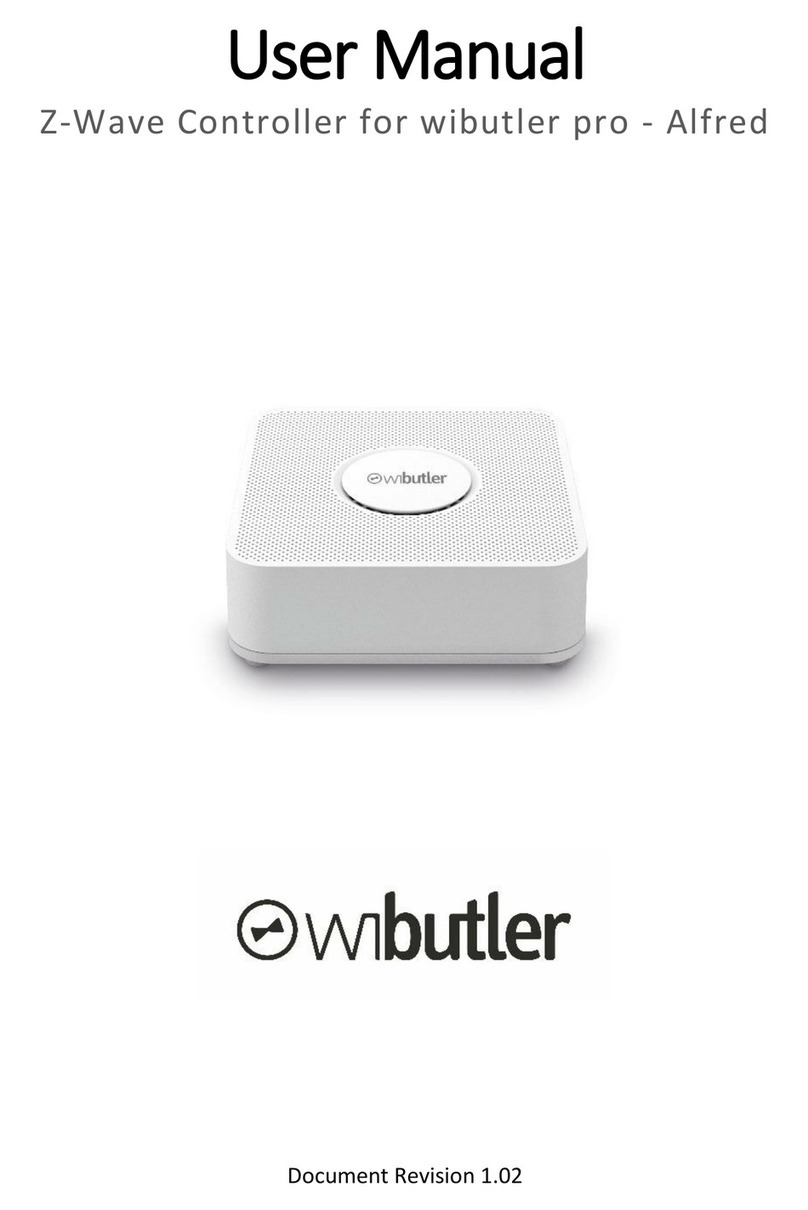
wibutler
wibutler Z-Wave Controller user manual
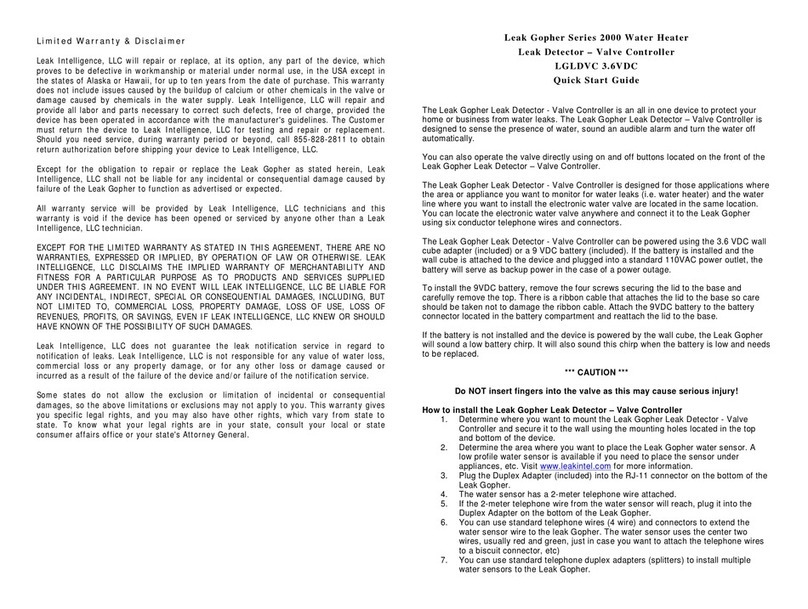
Leak
Leak Gopher Series quick start guide
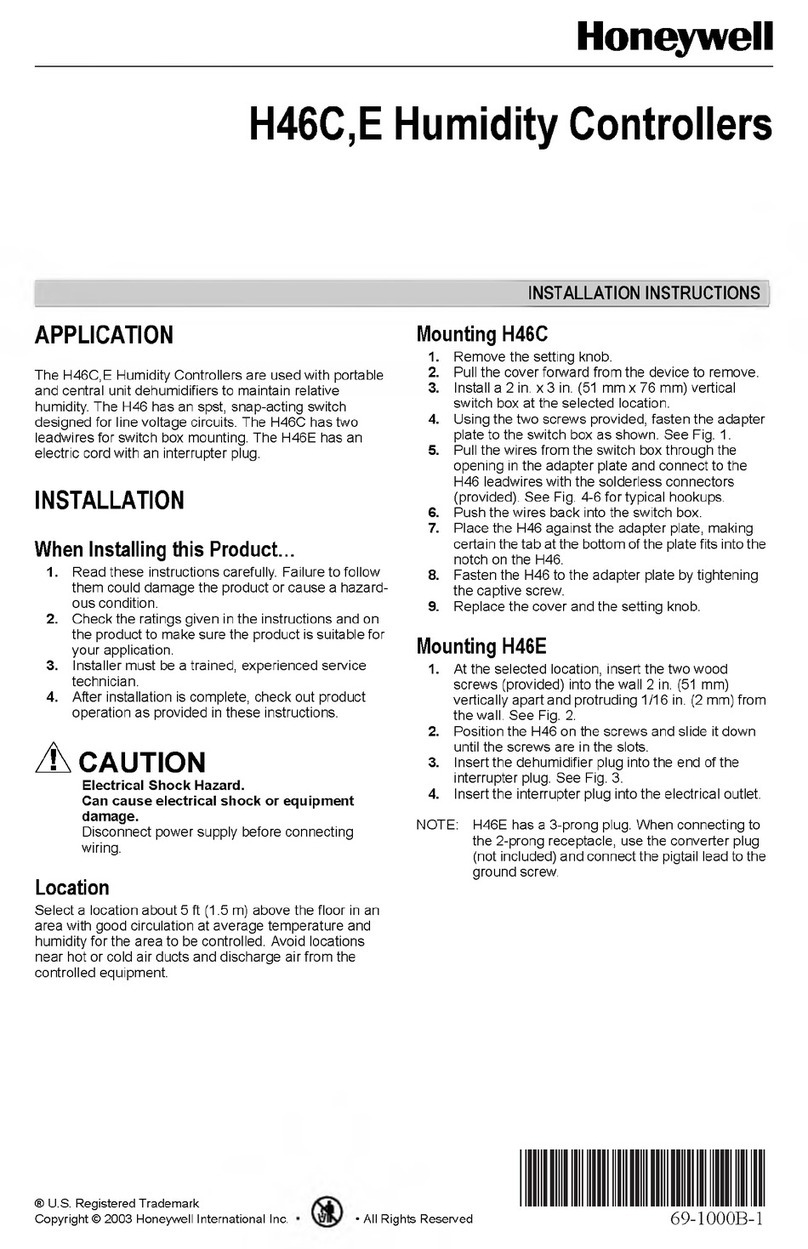
Honeywell
Honeywell H46E installation instructions
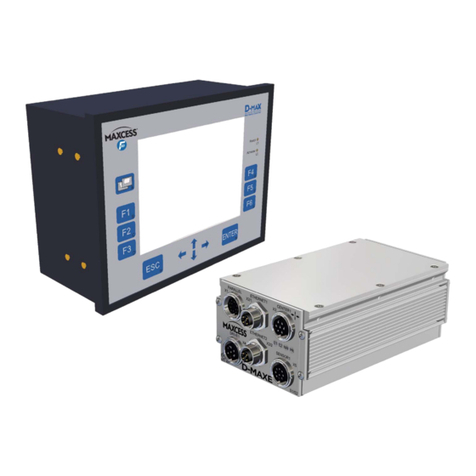
Maxcess
Maxcess D-MAXE operating instructions
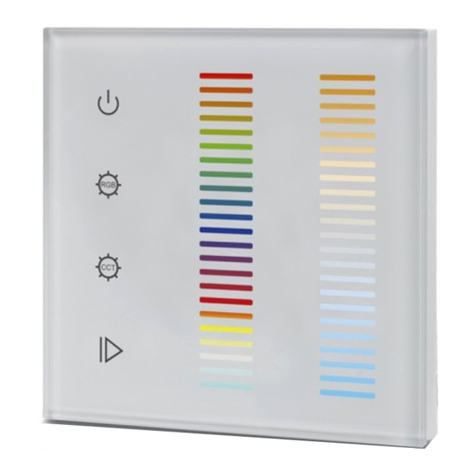
Sunricher
Sunricher SR-2834DMX-5C quick start guide
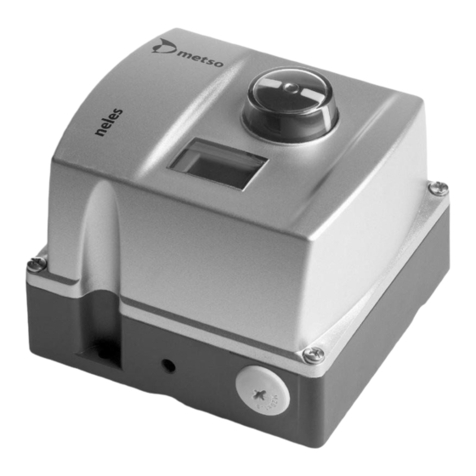
Metso
Metso neles ND9000H Installation, maintenance and operation instructions
